【Java】MyBatis快速入门及详解
文章目录
- 1. MyBatis概述
- 2. MyBatis快速入门
- 2.1 创建项目
- 2.2 添加依赖
- 2.3 数据准备
- 2.4 编写代码
- 2.4.1 编写核心配置文件
- 2.4.2 编写SQL映射文件
- 2.4.3 编写Java代码
- 3. Mapper代理开发
- 4. MyBatis核心配置文件
- 5. 案例练习
- 5.1 数据准备
- 5.2 查询数据
- 5.2.1 查询所有数据
- 5.2.2 查询单条数据详情
- 5.2.3 条件查询
- 5.2.3.1 固定多条件查询
- 5.2.3.2 动态多条件查询
- 5.2.3.3 动态单条件查询
- 5.3 添加数据
- 5.4 修改数据
- 5.5 删除数据
- 5.5.1 删除单条数据
- 5.5.2 批量删除数据
- 6. Mybatis参数传递
- 6.1 多个参数
- 6.2 单个参数
- 7. 注解实现CRUD
1. MyBatis概述
1.MyBatis概念:MyBatis是一款优秀的持久层框架,用于简化JDBC开发。
- 它支持自定义 SQL、存储过程以及高级映射
- 免除了几乎所有的 JDBC 代码以及设置参数和获取结果集的工作
- 可以通过简单的 XML 或注解来配置和映射原始类型、接口和 Java POJO(Plain Old Java Objects,普通老式 Java 对象)为数据库中的记录
注:JavaEE分为三层架构:表现层、业务层和持久层,持久层是负责将数据保存到数据库的那一层代码。
2.MyBatis文档: https://mybatis.net.cn/
3.MyBatis简化了JDBC的开发,免除了JDBC 代码以及设置参数和获取结果集的工作
- 硬编码:通过配置文件简化
- 注册驱动,获取连接
- SQL语句
- 操作繁琐:MyBatis自动完成
- 设置参数
- 封装结果集
2. MyBatis快速入门
MyBatis开发步骤:
- 导入MyBatis和数据库驱动等相关依赖
- 创建数据表以及该表对应的实体类
- 编写MyBatis核心配置文件(用于替换连接信息,解决硬编码问题)
- 编写SQL映射文件(用于统一管理SQL语句,解决硬编码问题)
- 编写代码
- 加载核心配置文件,获取SqlSessionFactory对象
- 获取SqlSession对象,执行SQL语句
- 释放资源
2.1 创建项目
1.New Project,创建新项目
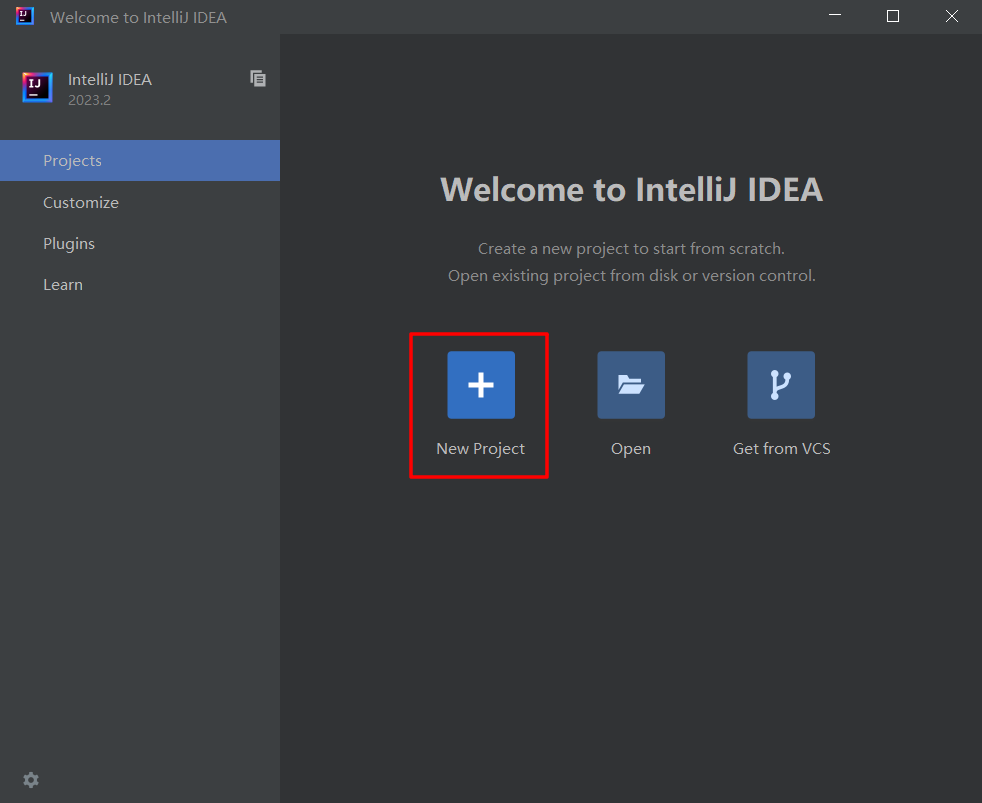
2.填写项目名称等信息,Build System勾选Maven,创建maven项目
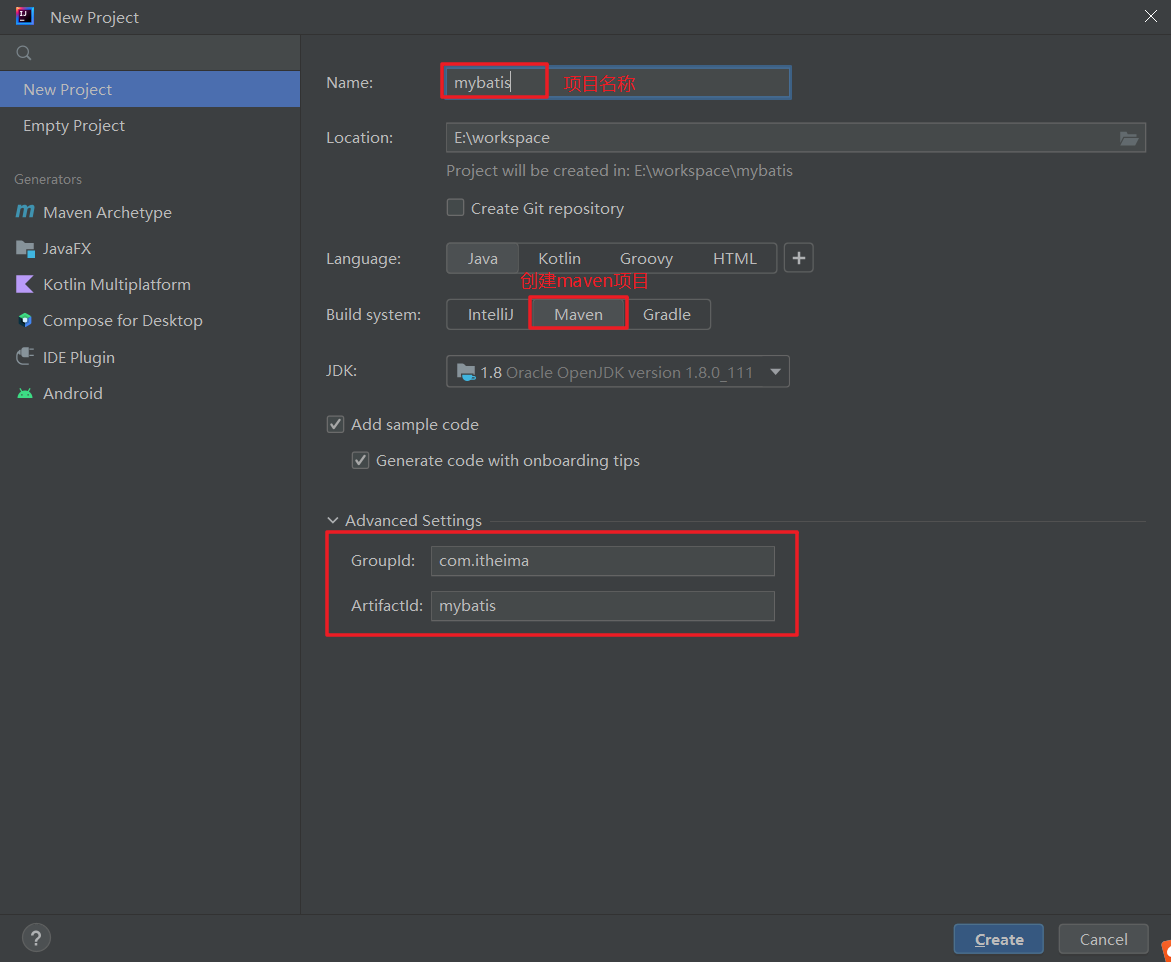
3.修改maven配置,修改settings.xml内容和IDEA配置
注:settings.xml路径如下:
apache-maven-3.9.3\conf\settings.xml
修改settings.xml内容如下:
<?xml version="1.0" encoding="UTF-8"?>
<settings xmlns="http://maven.apache.org/SETTINGS/1.2.0"xmlns:xsi="http://www.w3.org/2001/XMLSchema-instance"xsi:schemaLocation="http://maven.apache.org/SETTINGS/1.2.0 https://maven.apache.org/xsd/settings-1.2.0.xsd"><localRepository>D:\repository</localRepository><mirrors><mirror><id>nexus-aliyun</id><mirrorOf>central</mirrorOf><name>Nexus aliyun</name><url>http://maven.aliyun.com/nexus/content/groups/public</url></mirror></mirrors>
</settings>
修改IDEA配置如下:
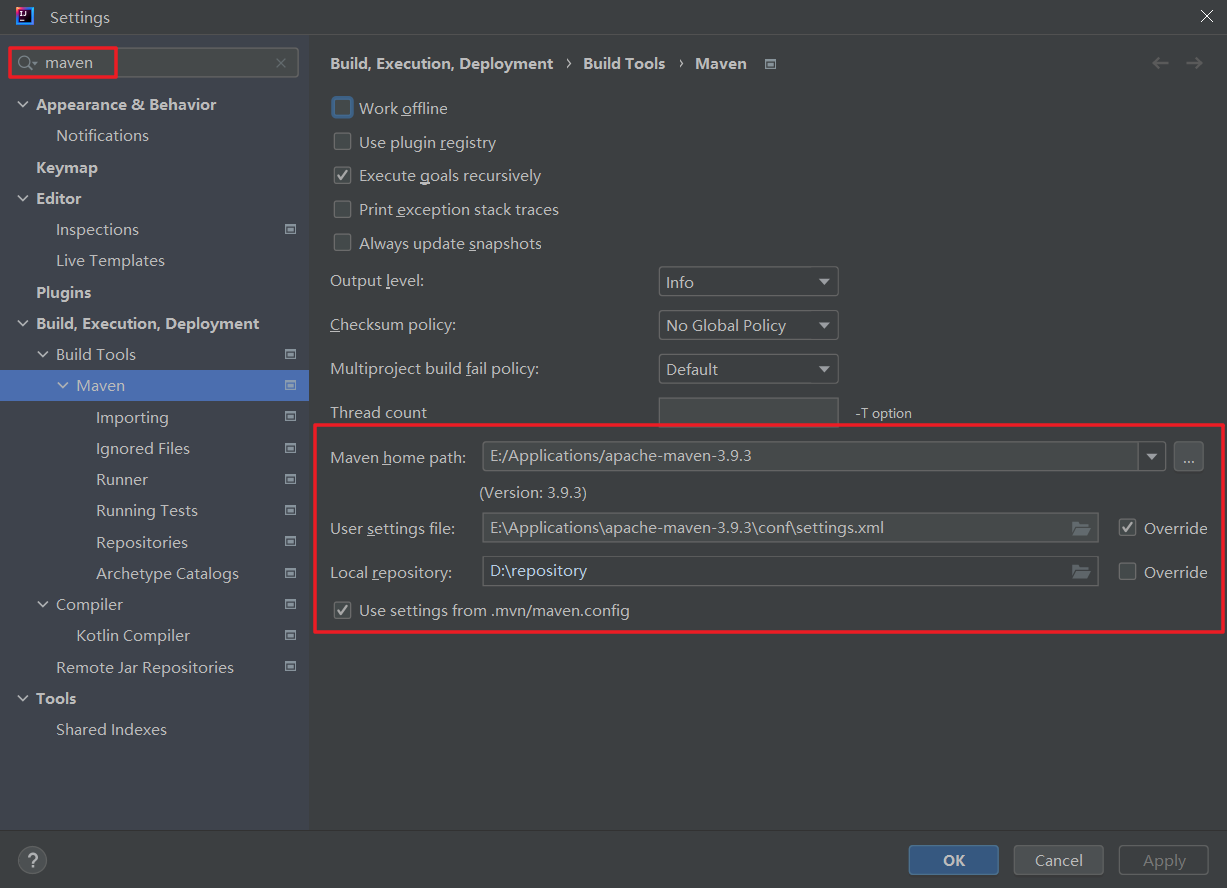
2.2 添加依赖
1.查找mybatis依赖配置
查看mybatis快速入门文档,得到mybatis依赖配置如下:https://mybatis.net.cn/getting-started.html
<dependency><groupId>org.mybatis</groupId><artifactId>mybatis</artifactId><version>x.x.x</version>
</dependency>
2.查找mysql驱动依赖配置
打开cmd,输入mysql -V ,查看mysql版本:此处我的版本是 8.0.32

mvnrepository官网,查找该版本对应的mysql驱动:https://mvnrepository.com/
<!-- https://mvnrepository.com/artifact/mysql/mysql-connector-java -->
<dependency><groupId>mysql</groupId><artifactId>mysql-connector-java</artifactId><version>8.0.32</version>
</dependency>
3.复制依赖代码到pom.xml中,最终pom.xml代码如下
<?xml version="1.0" encoding="UTF-8"?>
<project xmlns="http://maven.apache.org/POM/4.0.0"xmlns:xsi="http://www.w3.org/2001/XMLSchema-instance"xsi:schemaLocation="http://maven.apache.org/POM/4.0.0 http://maven.apache.org/xsd/maven-4.0.0.xsd"><modelVersion>4.0.0</modelVersion><groupId>com.itheima</groupId><artifactId>mybatis</artifactId><version>1.0-SNAPSHOT</version><properties><maven.compiler.source>8</maven.compiler.source><maven.compiler.target>8</maven.compiler.target><project.build.sourceEncoding>UTF-8</project.build.sourceEncoding></properties><dependencies><!--mybatis依赖--><dependency><groupId>org.mybatis</groupId><artifactId>mybatis</artifactId><version>3.5.13</version></dependency><!--mysql驱动--><dependency><groupId>mysql</groupId><artifactId>mysql-connector-java</artifactId><version>8.0.32</version></dependency><!--junit单元测试--><dependency><groupId>junit</groupId><artifactId>junit</artifactId><version>4.13.1</version><scope>test</scope></dependency></dependencies></project>
2.3 数据准备
1.创建数据库
-- 创建mybatis数据库
create database if not exists mybatis;
2.创建表
-- 删除tb_user表
drop table if exists tb_user;-- 创建tb_user表
create table tb_user (id int primary key auto_increment, -- id主键username varchar(20), -- 用户名password varchar(20), -- 密码gender varchar(1), -- 性别addr varchar(30)-- 地址
);-- 向tb_user表插入数据
insert into tb_user values (1, '张三' , '123', '男', '北京');
insert into tb_user values (2, '李四' , '456', '女', '天津');
insert into tb_user values (3, '王五' , '123456', '男', '西安');-- 查询tb_user表
select * from tb_user;
3.在 com.itheima包下新建 pojo 包,并在 pojo 包下创建实体类 User,对应tb_user表
package com.itheima.pojo;/*** 用户类* 在实体类中,基本数据类型建议使用其对应的包装类型*/
public class User {private Integer id; // id主键private String username; // 用户名private String password; // 密码private String gender; // 性别private String addr; // 地址public Integer getId() {return id;}public void setId(Integer id) {this.id = id;}public String getUsername() {return username;}public void setUsername(String username) {this.username = username;}public String getPassword() {return password;}public void setPassword(String password) {this.password = password;}public String getGender() {return gender;}public void setGender(String gender) {this.gender = gender;}public String getAddr() {return addr;}public void setAddr(String addr) {this.addr = addr;}@Overridepublic String toString() {return "User{" +"id=" + id +", username='" + username + '\'' +", password='" + password + '\'' +", gender='" + gender + '\'' +", addr='" + addr + '\'' +'}';}
}2.4 编写代码
2.4.1 编写核心配置文件
resources 目录下新建 mybatis-config.xml ,作为核心配置文件,内容如下:
注:数据库的连接信息,根据自己本地电脑的数据库信息填写
<?xml version="1.0" encoding="UTF-8" ?>
<!DOCTYPE configurationPUBLIC "-//mybatis.org//DTD Config 3.0//EN""http://mybatis.org/dtd/mybatis-3-config.dtd">
<configuration><environments default="development"><environment id="development"><transactionManager type="JDBC"/><dataSource type="POOLED"><!--数据库连接信息--><property name="driver" value="com.mysql.cj.jdbc.Driver"/><property name="url" value="jdbc:mysql://127.0.0.1:3306/mybatis?useSSL=false"/><property name="username" value="root"/><property name="password" value="123456"/></dataSource></environment></environments><mappers><!--加载sql映射文件--><mapper resource="UserMapper.xml"/></mappers>
</configuration>
2.4.2 编写SQL映射文件
resources 目录下新建 UserMapper.xml,作为用户表sql映射文件,需要与mybatis-config.xml中mapper标签中填写的文件名一致。
<?xml version="1.0" encoding="UTF-8" ?>
<!DOCTYPE mapperPUBLIC "-//mybatis.org//DTD Mapper 3.0//EN""http://mybatis.org/dtd/mybatis-3-mapper.dtd"><!--namespace: 名称空间-->
<mapper namespace="test"><select id="selectAll" resultType="com.itheima.pojo.User">select * from tb_user;</select>
</mapper>
2.4.3 编写Java代码
在com.itheima包下新建MybatisDemo.java,内容如下:
package com.itheima;import com.itheima.pojo.User;
import org.apache.ibatis.io.Resources;
import org.apache.ibatis.session.SqlSession;
import org.apache.ibatis.session.SqlSessionFactory;
import org.apache.ibatis.session.SqlSessionFactoryBuilder;import java.io.IOException;
import java.io.InputStream;
import java.util.List;/*** Mybatis快速入门代码*/
public class MybatisDemo {public static void main(String[] args) throws IOException {// 1.加载mybatis核心配置文件,获取SqlSessionFactoryString resource = "mybatis-config.xml";InputStream inputStream = Resources.getResourceAsStream(resource);SqlSessionFactory sqlSessionFactory = new SqlSessionFactoryBuilder().build(inputStream);// 2.从SqlSessionFactory中获取SqlSession,用它来执行sql语句SqlSession sqlSession = sqlSessionFactory.openSession();// 3.执行sql语句List<User> users = sqlSession.selectList("test.selectAll"); // 名称空间.id为唯一标识System.out.println(users);// 4.释放资源sqlSession.close();}
}执行代码,运行结果如下:

最终项目结构如下:
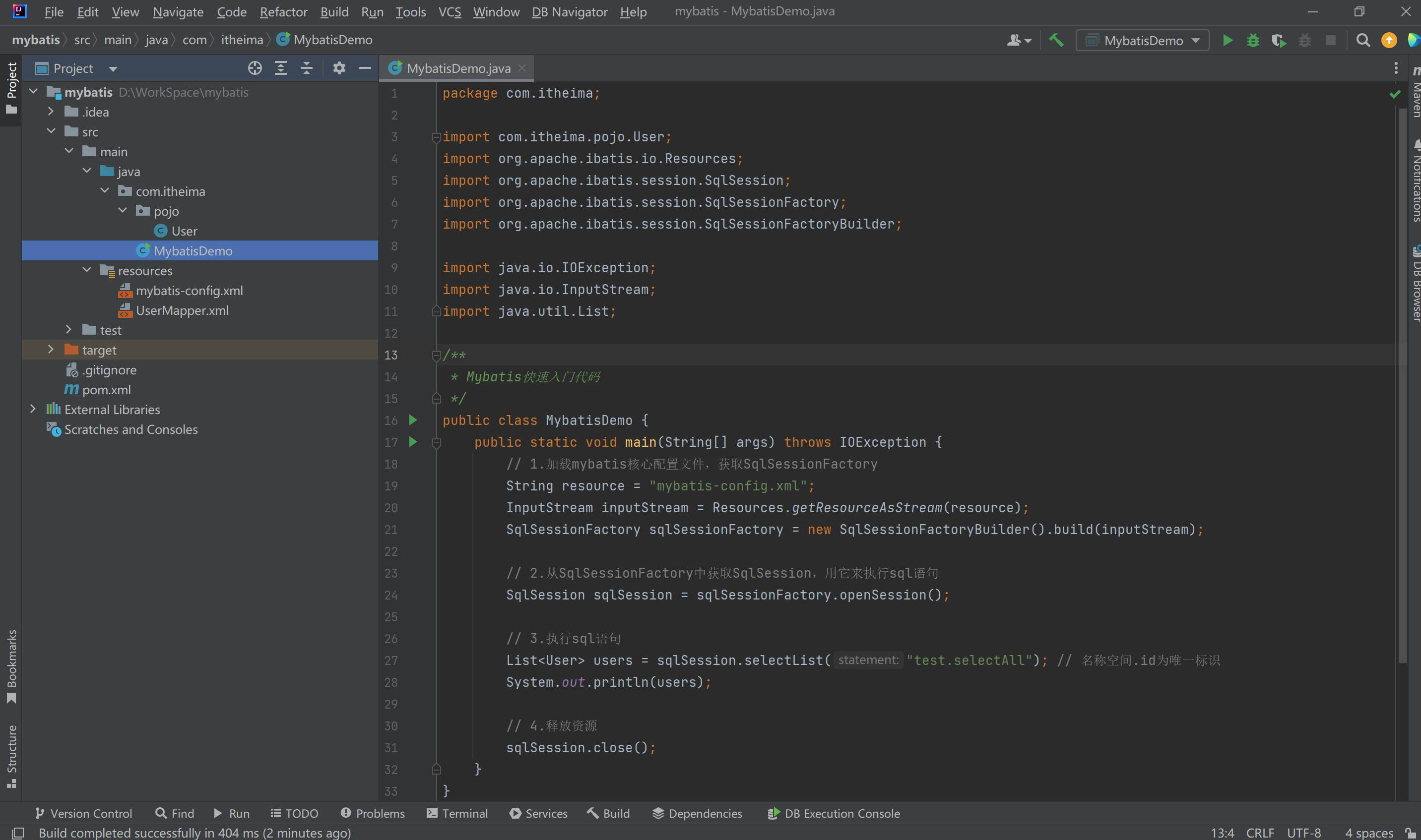
总结:
mybatis-config.xml:为核心配置文件,存在着数据库连接信息,以及需要加载的映射文件信息(UserMapper.xml)UserMapper.xml:为SQL映射文件,此处用于编写和管理SQL语句,并对每个SQL语句提供唯一的标识,由名称空间.id组成,如test.selectAllMybatisDemo.java:mybatis的程序执行入口代码,通过执行方法sqlSession.selectList("test.selectAll"),执行test.selectAll对应的SQL语句select * from tb_user;
3. Mapper代理开发
使用Mapper代理开发的优势:
- 解决原生方式中的硬编码
- 简化后期执行SQL
原生方式:
List<User> users = sqlSession.selectList("test.selectAll");
System.out.println(users);
Mapper代理开发方式:
UserMapper userMapper = sqlSession.getMapper(UserMapper.class);List<User> users = userMapper.selectAll();System.out.println(users);
使用Mapper代理开发方式完成入门案例:
- 定义与SQL映射文件同名的Mapper接口,并且将Mapper接口和SQL映射文件放置在同一目录下
- 设置SQL映射文件的namespace属性Mapper接口全限定名
- 在Mapper接口中定义方法,方法名就是SQL映射文件中sql语句的id,并保持参数类型和返回值类型一致
- 编码
- 通过SqlSession的getMapper方法获取Mapper接口的代理对象
- 调用对应方法完成sql的执行
注:如果Mapper接口名称和SQL映射文件名称相同,并在同一目录下,则可以使用包扫描的方式简化SQL映射文件的加载
1.定义与SQL映射文件同名的Mapper接口,并且将Mapper接口和SQL映射文件放置在同一目录下
- 在
com.itheima包下,新建mapper包,并新建UserMapper的接口 - 在
resource目录下,新建目录层次结构com/itheima/mapper,然后把UserMapper.xml拖到该目录下
将
UserMapper的接口的目录结构与UserMapper.xml都放在在com/itheima/mapper目录下,是为了保证在maven工程编译之后,UserMapper的接口和UserMapper.xml会打包在同一目录下
编译前的结构:

编译后的结构:
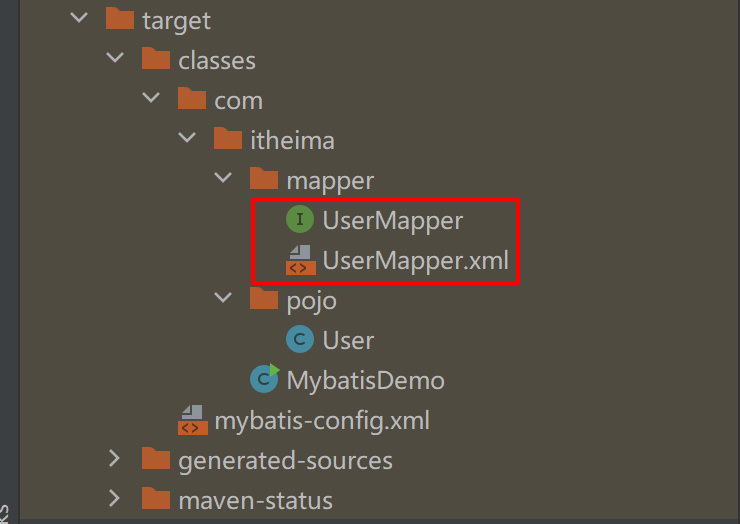
2.设置SQL映射文件 UserMapper.xml的namespace属性为Mapper接口全限定名 com.itheima.mapper.UserMapper
<?xml version="1.0" encoding="UTF-8" ?>
<!DOCTYPE mapperPUBLIC "-//mybatis.org//DTD Mapper 3.0//EN""http://mybatis.org/dtd/mybatis-3-mapper.dtd"><!--namespace: 名称空间-->
<mapper namespace="com.itheima.mapper.UserMapper"><select id="selectAll" resultType="com.itheima.pojo.User">select * from tb_user;</select>
</mapper>3.在Mapper接口中定义方法,方法名就是SQL映射文件中sql语句的id,并保持参数类型和返回值类型一致
- 方法名为
selectAll(),对应的是UserMapper.xml的id="selectAll" - 返回类型为
User对象的集合,即List<User>类型
package com.itheima.mapper;import com.itheima.pojo.User;import java.util.List;public interface UserMapper {List<User> selectAll();
}4.由于 UserMapper.xml路径发生了变化,所以也要相应的修改 mybatis-config.xml的sql映射文件路径为 com/itheima/mapper/UserMapper.xml
<?xml version="1.0" encoding="UTF-8" ?>
<!DOCTYPE configurationPUBLIC "-//mybatis.org//DTD Config 3.0//EN""http://mybatis.org/dtd/mybatis-3-config.dtd">
<configuration><environments default="development"><environment id="development"><transactionManager type="JDBC"/><dataSource type="POOLED"><!--数据库连接信息--><property name="driver" value="com.mysql.cj.jdbc.Driver"/><property name="url" value="jdbc:mysql://127.0.0.1:3306/mybatis?useSSL=false"/><property name="username" value="root"/><property name="password" value="123456"/></dataSource></environment></environments><mappers><!--加载sql映射文件--><mapper resource="com/itheima/mapper/UserMapper.xml"/></mappers>
</configuration>注:由于Mapper接口名称和SQL映射文件名称相同,且在同一目录下,那么也可以使用包扫描的方式简化SQL映射文件的加载
<!--一般方式:加载sql映射文件-->
<mapper resource="com/itheima/mapper/UserMapper.xml"/>
以上一般方式,可以替换为包扫描方式:
<!--包扫描方式:加载sql映射文件-->
<package name="com.itheima.mapper"/>
5.编码
- 通过SqlSession的getMapper方法获取Mapper接口的代理对象
- 调用对应方法完成sql的执行
package com.itheima;import com.itheima.mapper.UserMapper;
import com.itheima.pojo.User;
import org.apache.ibatis.io.Resources;
import org.apache.ibatis.session.SqlSession;
import org.apache.ibatis.session.SqlSessionFactory;
import org.apache.ibatis.session.SqlSessionFactoryBuilder;import java.io.IOException;
import java.io.InputStream;
import java.util.List;/*** Mybatis快速入门代码*/
public class MybatisDemo {public static void main(String[] args) throws IOException {// 1.加载mybatis核心配置文件,获取SqlSessionFactoryString resource = "mybatis-config.xml";InputStream inputStream = Resources.getResourceAsStream(resource);SqlSessionFactory sqlSessionFactory = new SqlSessionFactoryBuilder().build(inputStream);// 2.从SqlSessionFactory中获取SqlSession,用它来执行sql语句SqlSession sqlSession = sqlSessionFactory.openSession();// 3.获取UserMapper接口的代理对象UserMapper userMapper = sqlSession.getMapper(UserMapper.class);// 4.执行sql语句List<User> users = userMapper.selectAll();System.out.println(users);// 5.释放资源sqlSession.close();}
}执行代码,运行结果如下:

4. MyBatis核心配置文件
MyBatis核心配置文件说明见官网:https://mybatis.net.cn/configuration.html
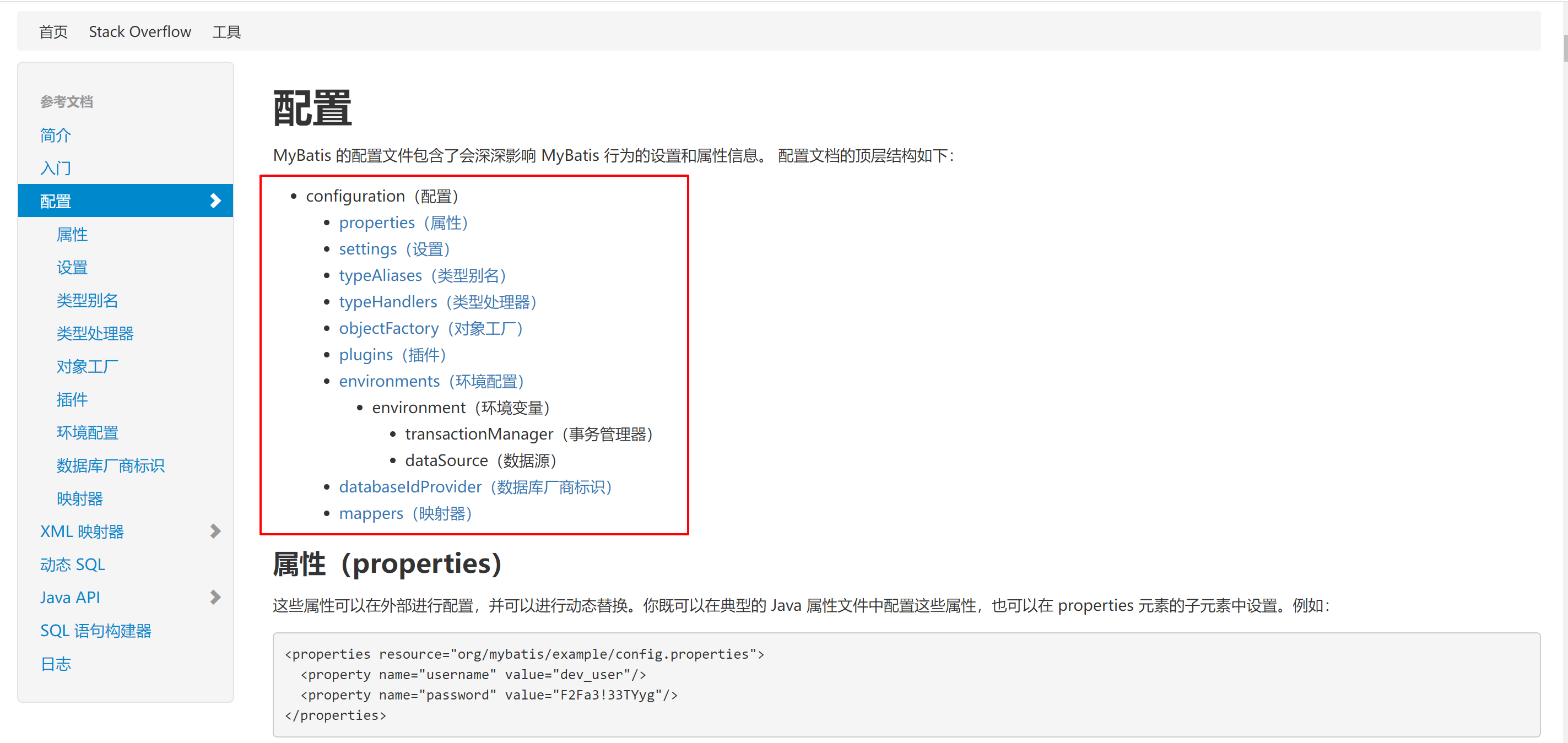
注:配置各个标签时,需要遵守前后顺序,这个顺序就是以上截图的顺序
1.environments :环境配置,MyBatis 可以配置成适应多种环境,这种机制有助于将 SQL 映射应用于多种数据库之中, 现实情况下有多种理由需要这么做。例如,开发、测试和生产环境需要有不同的配置;或者想在具有相同 Schema 的多个生产数据库中使用相同的 SQL 映射。还有许多类似的使用场景。
例如:以下配置表示有开发和测试两个环境的数据库信息,默认使用开发环境的数据库信息。
如果想切换默认的数据库信息,则修改
default属性为对应的environment配置的id即可,比如default="test",表示默认使用测试数据库的环境信息
<!--
environments:
1.配置数据库连接环境信息,可以配置多个environment
2.通过default属性切换不同的environment
-->
<environments default="development"><!--开发环境数据库信息--><environment id="development"><transactionManager type="JDBC"/><dataSource type="POOLED"><!--数据库连接信息--><property name="driver" value="com.mysql.cj.jdbc.Driver"/><property name="url" value="jdbc:mysql://127.0.0.1:3306/mybatis?useSSL=false"/><property name="username" value="root"/><property name="password" value="123456"/></dataSource></environment><!--测试环境数据库信息--><environment id="test"><transactionManager type="JDBC"/><dataSource type="POOLED"><!--数据库连接信息--><property name="driver" value="com.mysql.cj.jdbc.Driver"/><property name="url" value="jdbc:mysql://127.0.0.1:3306/mybatis?useSSL=false"/><property name="username" value="root"/><property name="password" value="123456"/></dataSource></environment>
</environments>
2.typeAliases:类型别名,可为 Java 类型设置一个缩写名字。 它仅用于 XML 配置,意在降低冗余的全限定类名书写。
例如:原先 UserMapper.xml中的 resultType 属性为 com.itheima.pojo.User
<!--namespace: 名称空间-->
<mapper namespace="com.itheima.mapper.UserMapper"><select id="selectAll" resultType="com.itheima.pojo.User">select * from tb_user;</select>
</mapper>
使用 typeAliases:
- 首先修改核心配置文件
mybatis-config.xml中的typeAliases配置 - 然后修改
UserMapper.xml中的resultType属性
mybatis-config.xml:
<typeAliases><package name="com.itheima.pojo"/>
</typeAliases>
UserMapper.xml
<!--namespace: 名称空间-->
<mapper namespace="com.itheima.mapper.UserMapper"><select id="selectAll" resultType="User">select * from tb_user;</select>
</mapper>
5. 案例练习
5.1 数据准备
需求:能够使用映射配置文件实现CRUD操作,此处是对商品品牌数据的增删改查操作

如上图所示产品原型,里面包含了品牌数据的 查询 、按条件查询、添加、删除、批量删除、修改 等功能,而这些功能其实就是对数据库表中的数据进行CRUD操作。接下来我们就使用Mybatis完成品牌数据的增删改查操作。以下是我们要完成功能列表:
- 查询
- 查询所有数据
- 查询详情
- 条件查询
- 添加
- 修改
- 修改全部字段
- 修改动态字段
- 删除
- 删除一个
- 批量删除
1.创建数据库表 tb_brand
-- 删除tb_brand表
drop table if exists tb_brand;-- 创建tb_brand表
create table tb_brand (id int primary key auto_increment, -- id主键brand_name varchar(20), -- 品牌名称company_name varchar(20), -- 企业名称ordered int, -- 排序字段description varchar(100), -- 描述信息status int -- 状态:0:禁用 1:启用
);-- 向tb_brand表插入数据
insert into tb_brand (brand_name, company_name, ordered, description, status)
values ('三只松鼠', '三只松鼠股份有限公司', 5, '好吃不上火', 0),('华为', '华为技术有限公司', 100, '华为致力于把数字世界带入每个人、每个家庭、每个组织,构建万物互联的智能世界', 1),('小米', '小米科技有限公司', 50, 'are you ok', 1);-- 查询tb_brand表
select * from tb_brand;
2.在 com.itheima.pojo 包下创建 Brand 实体类
package com.itheima.pojo;/*** 品牌* 在实体类中,基本数据类型建议使用其对应的包装类型*/
public class Brand {private Integer id; // id 主键private String brandName; // 品牌名称private String companyName; // 企业名称private Integer ordered; // 排序字段private String description; // 描述信息private Integer status; // 状态:0:禁用 1:启用public Integer getId() {return id;}public void setId(Integer id) {this.id = id;}public String getBrandName() {return brandName;}public void setBrandName(String brandName) {this.brandName = brandName;}public String getCompanyName() {return companyName;}public void setCompanyName(String companyName) {this.companyName = companyName;}public Integer getOrdered() {return ordered;}public void setOrdered(Integer ordered) {this.ordered = ordered;}public String getDescription() {return description;}public void setDescription(String description) {this.description = description;}public Integer getStatus() {return status;}public void setStatus(Integer status) {this.status = status;}@Overridepublic String toString() {return "Brand{" +"id=" + id +", brandName='" + brandName + '\'' +", companyName='" + companyName + '\'' +", ordered=" + ordered +", description='" + description + '\'' +", status=" + status +'}';}
}3.编写测试用例,在 test/java 目录下创建包 com.itheima.test ,以及测试用例类 MybatisTest
项目结构如下:
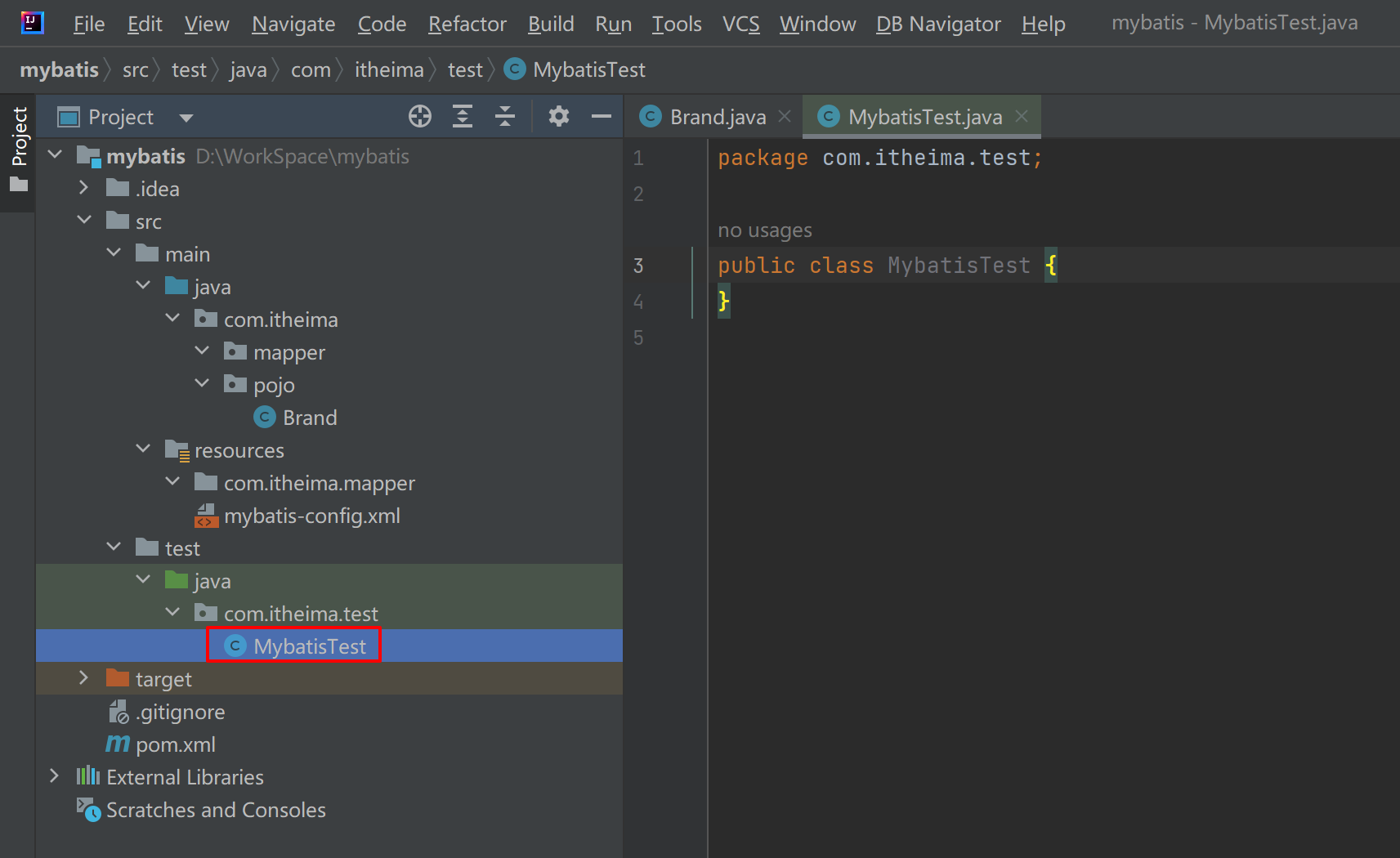
4.编写MyBatis核心配置文件,在 resources 目录下创建 mybatis-config.xml文件,内容如下:
注:数据库的连接信息,根据自己本地电脑的数据库信息填写
<?xml version="1.0" encoding="UTF-8" ?>
<!DOCTYPE configurationPUBLIC "-//mybatis.org//DTD Config 3.0//EN""http://mybatis.org/dtd/mybatis-3-config.dtd">
<configuration><!--类型别名--><typeAliases><package name="com.itheima.pojo"/></typeAliases><!--environments:配置数据库连接环境信息,可以配置多个environment--><environments default="development"><!--开发环境数据库信息--><environment id="development"><transactionManager type="JDBC"/><dataSource type="POOLED"><!--数据库连接信息--><property name="driver" value="com.mysql.cj.jdbc.Driver"/><property name="url" value="jdbc:mysql://127.0.0.1:3306/mybatis?useSSL=false"/><property name="username" value="root"/><property name="password" value="123456"/></dataSource></environment></environments><!--加载sql映射文件--><mappers><package name="com.itheima.mapper"/></mappers></configuration>5.安装 MyBatisX 插件
MybatisX 是一款基于 IDEA 的快速开发插件,为效率而生,功能如下:
- XML映射配置文件 和 接口方法 间相互跳转
- 根据接口方法生成 statement
安装方式:点击 File -> Settings -> Plugins -> 搜索 MybatisX ,就能看到如下图所示界面,点击 install 安装。
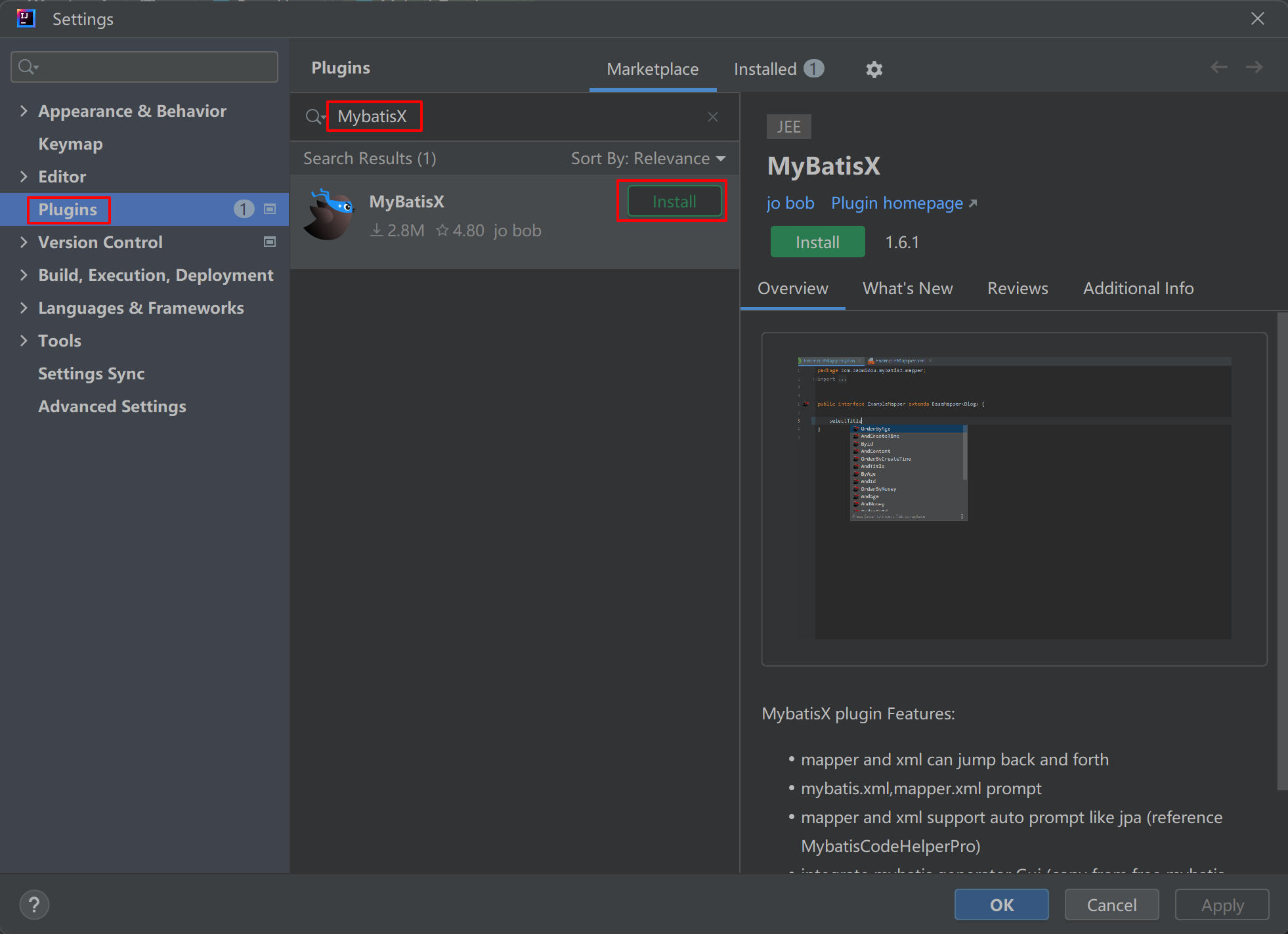
插件效果:
红色头绳的表示映射配置文件,蓝色头绳的表示mapper接口。在mapper接口点击红色头绳的小鸟图标会自动跳转到对应的映射配置文件,在映射配置文件中点击蓝色头绳的小鸟图标会自动跳转到对应的mapper接口。
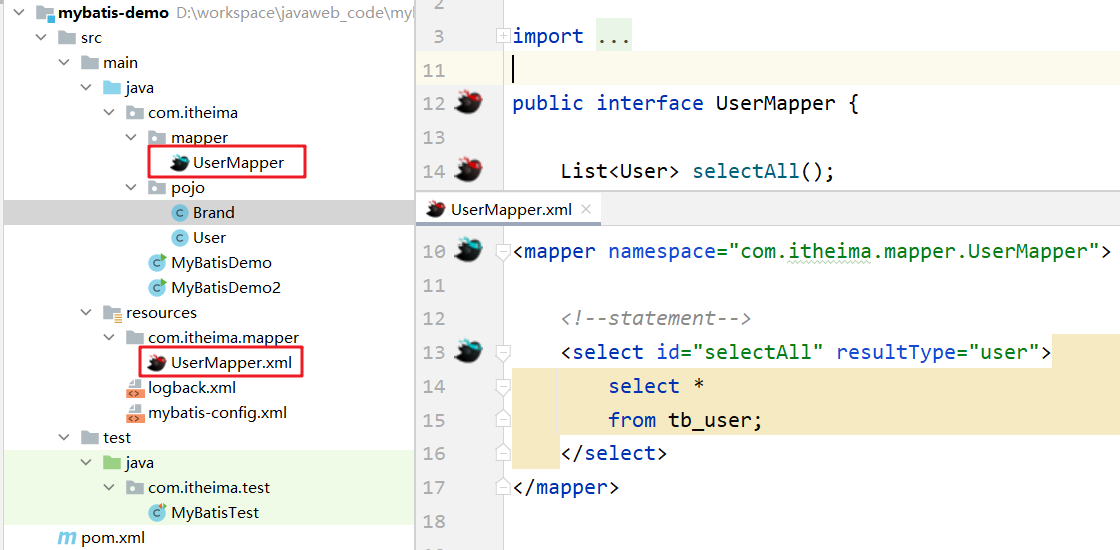
也可以在mapper接口中定义方法,自动生成映射配置文件中的 statement ,如图所示:

5.2 查询数据
5.2.1 查询所有数据
如图所示就是页面上展示的数据,而这些数据需要从数据库进行查询:

接下来我们就来讲查询所有数据功能,而实现该功能我们分以下步骤进行实现:
- 编写接口方法
- 编写SQL语句
- 编写测试方法
1.编写接口方法:在 com.itheima.mapper 包写创建名为 BrandMapper 的接口,并在该接口中定义 List<Brand> selectAll() 方法。
package com.itheima.mapper;import com.itheima.pojo.Brand;import java.util.List;public interface BrandMapper {/*** 查询所有*/List<Brand> selectAll();}2.编写SQL语句:在 reources 目录下创建 com/itheima/mapper 目录结构,并在该目录下创建名为 BrandMapper.xml 的映射配置文件
<?xml version="1.0" encoding="UTF-8" ?>
<!DOCTYPE mapperPUBLIC "-//mybatis.org//DTD Mapper 3.0//EN""http://mybatis.org/dtd/mybatis-3-mapper.dtd"><!--namespace: 名称空间-->
<mapper namespace="com.itheima.mapper.BrandMapper"><select id="selectAll" resultType="brand">select * from tb_brand;</select>
</mapper>3.编写测试方法:在MybatisTest类中,编写如下代码
package com.itheima.test;import com.itheima.mapper.BrandMapper;
import com.itheima.pojo.Brand;
import org.apache.ibatis.io.Resources;
import org.apache.ibatis.session.SqlSession;
import org.apache.ibatis.session.SqlSessionFactory;
import org.apache.ibatis.session.SqlSessionFactoryBuilder;
import org.junit.Test;import java.io.IOException;
import java.io.InputStream;
import java.util.List;public class MybatisTest {@Testpublic void testSelectAll() throws IOException {// 1.获取SqlSessionFactoryString resource = "mybatis-config.xml";InputStream inputStream = Resources.getResourceAsStream(resource);SqlSessionFactory sqlSessionFactory = new SqlSessionFactoryBuilder().build(inputStream);// 2.获取SqlSession对象SqlSession sqlSession = sqlSessionFactory.openSession();// 3.获取Mapper接口的代理对象BrandMapper brandMapper = sqlSession.getMapper(BrandMapper.class);// 4.执行方法List<Brand> brands = brandMapper.selectAll();System.out.println(brands);// 5.释放资源sqlSession.close();}
}运行结果如下:

根据上述运行结果可以看到:id、ordered、description 和 status 数据封装成功,能够正常打印数据,但是 brandName 和 companyName 数据自动封装失败。
原因:是因为实体类中的属性名和数据库表中的字段名不一致导致的,查询 实体类 和 表中的字段 发现,在实体类中属性名是 brandName 和 companyName ,而表中的字段名为 brand_name 和 company_name,如下图所示 。

解决方案:只需要保持这两部分的名称一致这个问题就迎刃而解,有以下两种方式可以解决
- 给字段起别名
- 使用resultMap定义字段和属性的映射关系(推荐)
1.给字段取别名
编写SQL语句时,给字段取别名,将别名定义成与属性名一致即可
<mapper namespace="com.itheima.mapper.BrandMapper"><select id="selectAll" resultType="brand">selectid, brand_name as brandName, company_name as companyName, ordered, description, statusfrom tb_brand;</select>
</mapper>
上面的SQL语句中的字段列表书写麻烦,如果表中还有更多的字段,同时其他的功能也需要查询这些字段时就显得我们的代码不够精炼,Mybatis提供了sql 片段可以提高sql的复用性。
<mapper namespace="com.itheima.mapper.BrandMapper"><!--定义sql片段,id属性值是唯一标识--><sql id="brand_column">id, brand_name as brandName, company_name as companyName, ordered, description, status</sql><!--使用include标签引用sql片段,refid指定sql片段的id值--><select id="selectAll" resultType="brand">select<include refid="brand_column" />from tb_brand;</select>
</mapper>
注:起别名 + sql片段的方式可以解决上述问题,但是它也存在问题。如果还有功能只需要查询部分字段,而不是查询所有字段,那么我们就需要再定义一个 SQL 片段,这就显得不是那么灵活。
2.使用resultMap定义字段和属性的映射关系
<mapper namespace="com.itheima.mapper.BrandMapper"><!--定义了brandResultMap对应的是brand类型--><resultMap id="brandResultMap" type="brand"><!--1.id标签完成主键字段的映射,result标签完成一般字段的映射2.column为数据库表字段,property为实体类属性--><result column="brand_name" property="brandName"/><result column="company_name" property="companyName"/></resultMap><!--此处改为使用resultMap,而不是resultType--><select id="selectAll" resultMap="brandResultMap">select *from tb_brand;</select>
</mapper>
注意:上面只需要定义 字段名 和 属性名 不一样的映射,而一样的则不需要专门定义出来。
修改后的运行结果如下:

5.2.2 查询单条数据详情
有些数据的属性比较多,在页面表格中无法全部实现,而只会显示部分,而其他属性数据的查询可以通过 查看详情 来进行查询,如下图所示:

1.编写接口方法
package com.itheima.mapper;import com.itheima.pojo.Brand;import java.util.List;public interface BrandMapper {/*** 查看详情:根据Id查询*/Brand selectById(int id);}2.编写SQL语句
<?xml version="1.0" encoding="UTF-8" ?>
<!DOCTYPE mapperPUBLIC "-//mybatis.org//DTD Mapper 3.0//EN""http://mybatis.org/dtd/mybatis-3-mapper.dtd"><!--namespace: 名称空间-->
<mapper namespace="com.itheima.mapper.BrandMapper"><!--字段与属性映射--><resultMap id="brandResultMap" type="brand"><result column="brand_name" property="brandName"/><result column="company_name" property="companyName"/></resultMap><select id="selectById" resultMap="brandResultMap">select * from tb_brand where id = #{id};</select>
</mapper>3.编写测试方法
package com.itheima.test;import com.itheima.mapper.BrandMapper;
import com.itheima.pojo.Brand;
import org.apache.ibatis.io.Resources;
import org.apache.ibatis.session.SqlSession;
import org.apache.ibatis.session.SqlSessionFactory;
import org.apache.ibatis.session.SqlSessionFactoryBuilder;
import org.junit.Test;import java.io.IOException;
import java.io.InputStream;
import java.util.List;public class MybatisTest {@Testpublic void testSelectById() throws IOException {// 1.获取SqlSessionFactoryString resource = "mybatis-config.xml";InputStream inputStream = Resources.getResourceAsStream(resource);SqlSessionFactory sqlSessionFactory = new SqlSessionFactoryBuilder().build(inputStream);// 2.获取SqlSession对象SqlSession sqlSession = sqlSessionFactory.openSession();// 3.获取Mapper接口的代理对象BrandMapper brandMapper = sqlSession.getMapper(BrandMapper.class);// 4.执行方法int id = 1; // 接收参数,该id以后需要传递过来Brand brand = brandMapper.selectById(id);System.out.println(brand);// 5.释放资源sqlSession.close();}
}运行结果如下:

1.参数占位符:可以看到以上SQL语句中使用了 #{id},也就是参数占位符。
mybatis提供了两种参数占位符:
#{}:执行SQL时,会将#{}占位符替换为?,底层使用的是PreparedStatement,可以防止SQL注入。${}:直接拼接SQL,底层使用的是Statement,会存在SQL注入问题。
注:对比得出,开发都是使用
#{}参数占位符
2.parameterType的使用:对于有参数的mapper接口方法,我们在映射配置文件中应该配置 ParameterType 来指定参数类型,只不过该属性都可以省略。
<select id="selectById" parameterType="int" resultMap="brandResultMap">select * from tb_brand where id = #{id};
</select>
3.SQL语句中的特殊字符处理
以后肯定会在SQL语句中写一下特殊字符,比如某一个字段大于某个值,但是 > < 等字符在xml中有特殊含义,所以此时我们需要将这些符号进行转义,可以使用以下两种方式进行转义:
- 使用xml的转义字符,例如:
<就是<的转义字符。 - 使用
CDATA,格式为<![CDATA[内容]]>,例如:<![CDATA[ < ]]>就是<的转义字符。
<select id="selectById" resultMap="brandResultMap">select * from tb_brandwhere id <![CDATA[ < ]]> #{id};
</select>
注:如果使用了大于或者小于某个值,那么返回的就是
List集合,此时要修改mapper接口的返回对象为List<Brand>
5.2.3 条件查询
5.2.3.1 固定多条件查询

我们经常会遇到如上图所示的多条件查询,将多条件查询的结果展示在下方的数据列表中。而我们做这个功能需要分析最终的SQL语句应该是什么样,思考两个问题
- 条件表达式
- 如何连接
条件字段 企业名称 和 品牌名称 需要进行模糊查询,所以条件应该是:

简单的分析后,我们来看功能实现的步骤:
- 编写接口方法
- 参数:所有查询条件
- 结果:
List<Brand>
- 在映射配置文件中编写SQL语句
- 编写测试方法并执行
1.编写接口方法:该功能有三个参数,我们就需要考虑定义接口时,参数应该如何定义。
Mybatis针对多参数有多种实现:
- 散装参数:需要使用
@Param("SQL中的参数占位符名称") - 实体类封装参数:只需要保证SQL中的参数名和实体类属性名对应上,即可设置成功
- map集合:只需要保证SQL中的参数名和map集合的键名对应上,即可设置成功
1.1 散装参数:使用 @Param("参数名称") 标记每一个参数,在映射配置文件中就需要使用 #{参数名称} 进行占位
package com.itheima.mapper;import com.itheima.pojo.Brand;
import org.apache.ibatis.annotations.Param;import java.util.List;public interface BrandMapper {/*** 多条件查询*/List<Brand> selectByCondition(@Param("status") int status, @Param("companyName") String companyName, @Param("brandName") String brandName);}1.2 实体类封装参数:将多个参数封装成一个 实体对象 ,将该实体对象作为接口的方法参数。该方式要求在映射配置文件的SQL中使用 #{内容} 时,里面的内容必须和实体类属性名保持一致。
package com.itheima.mapper;import com.itheima.pojo.Brand;
import org.apache.ibatis.annotations.Param;import java.util.List;public interface BrandMapper {/*** 多条件查询*/List<Brand> selectByCondition(Brand brand);
}1.3 map集合:将多个参数封装到map集合中,将map集合作为接口的方法参数。该方式要求在映射配置文件的SQL中使用 #{内容} 时,里面的内容必须和map集合中键的名称一致。
package com.itheima.mapper;import com.itheima.pojo.Brand;
import org.apache.ibatis.annotations.Param;import java.util.List;
import java.util.Map;public interface BrandMapper {/*** 多条件查询*/List<Brand> selectByCondition(Map map);
}2.编写SQL语句
<?xml version="1.0" encoding="UTF-8" ?>
<!DOCTYPE mapperPUBLIC "-//mybatis.org//DTD Mapper 3.0//EN""http://mybatis.org/dtd/mybatis-3-mapper.dtd"><!--namespace: 名称空间-->
<mapper namespace="com.itheima.mapper.BrandMapper"><!--字段与属性映射--><resultMap id="brandResultMap" type="brand"><result column="brand_name" property="brandName"/><result column="company_name" property="companyName"/></resultMap><select id="selectByCondition" resultMap="brandResultMap">select * from tb_brandwhere status = #{status}and company_name like #{companyName}and brand_name like #{brandName}</select>
</mapper>3.编写测试方法
3.1 对应 1.1 中使用 @Param("参数名称") 标记每一个参数的方式
package com.itheima.test;import com.itheima.mapper.BrandMapper;
import com.itheima.pojo.Brand;
import org.apache.ibatis.io.Resources;
import org.apache.ibatis.session.SqlSession;
import org.apache.ibatis.session.SqlSessionFactory;
import org.apache.ibatis.session.SqlSessionFactoryBuilder;
import org.junit.Test;import java.io.IOException;
import java.io.InputStream;
import java.util.List;public class MybatisTest {@Testpublic void testSelectByCondition() throws IOException {// 1.获取SqlSessionFactoryString resource = "mybatis-config.xml";InputStream inputStream = Resources.getResourceAsStream(resource);SqlSessionFactory sqlSessionFactory = new SqlSessionFactoryBuilder().build(inputStream);// 2.获取SqlSession对象SqlSession sqlSession = sqlSessionFactory.openSession();// 3.获取Mapper接口的代理对象BrandMapper brandMapper = sqlSession.getMapper(BrandMapper.class);// 4.执行方法// 接收参数int status = 1;String companyName = "华为";String brandName = "华为";// 处理参数companyName = "%" + companyName + "%";brandName = "%" + brandName + "%";// 接口方法参数使用 @Param 方式调用的方法List<Brand> brands = brandMapper.selectByCondition(status, companyName, brandName);System.out.println(brands);// 5.释放资源sqlSession.close();}
}3.2 对应 1.2 中的将多个参数封装成一个 实体对象的方式
package com.itheima.test;import com.itheima.mapper.BrandMapper;
import com.itheima.pojo.Brand;
import org.apache.ibatis.io.Resources;
import org.apache.ibatis.session.SqlSession;
import org.apache.ibatis.session.SqlSessionFactory;
import org.apache.ibatis.session.SqlSessionFactoryBuilder;
import org.junit.Test;import java.io.IOException;
import java.io.InputStream;
import java.util.List;public class MybatisTest {@Testpublic void testSelectByCondition() throws IOException {// 1.获取SqlSessionFactoryString resource = "mybatis-config.xml";InputStream inputStream = Resources.getResourceAsStream(resource);SqlSessionFactory sqlSessionFactory = new SqlSessionFactoryBuilder().build(inputStream);// 2.获取SqlSession对象SqlSession sqlSession = sqlSessionFactory.openSession();// 3.获取Mapper接口的代理对象BrandMapper brandMapper = sqlSession.getMapper(BrandMapper.class);// 4.执行方法// 接收参数int status = 1;String companyName = "华为";String brandName = "华为";// 处理参数companyName = "%" + companyName + "%";brandName = "%" + brandName + "%";// 接口方法参数是 实体类对象 方式调用的方法Brand brand = new Brand();brand.setStatus(status);brand.setCompanyName(companyName);brand.setBrandName(brandName);List<Brand> brands = brandMapper.selectByCondition(brand);System.out.println(brands);// 5.释放资源sqlSession.close();}
}3.3 对应 1.3 中的将多个参数封装到map集合的方式
package com.itheima.test;import com.itheima.mapper.BrandMapper;
import com.itheima.pojo.Brand;
import org.apache.ibatis.io.Resources;
import org.apache.ibatis.session.SqlSession;
import org.apache.ibatis.session.SqlSessionFactory;
import org.apache.ibatis.session.SqlSessionFactoryBuilder;
import org.junit.Test;import java.io.IOException;
import java.io.InputStream;
import java.util.HashMap;
import java.util.List;
import java.util.Map;public class MybatisTest {@Testpublic void testSelectByCondition() throws IOException {// 1.获取SqlSessionFactoryString resource = "mybatis-config.xml";InputStream inputStream = Resources.getResourceAsStream(resource);SqlSessionFactory sqlSessionFactory = new SqlSessionFactoryBuilder().build(inputStream);// 2.获取SqlSession对象SqlSession sqlSession = sqlSessionFactory.openSession();// 3.获取Mapper接口的代理对象BrandMapper brandMapper = sqlSession.getMapper(BrandMapper.class);// 4.执行方法// 接收参数int status = 1;String companyName = "华为";String brandName = "华为";// 处理参数companyName = "%" + companyName + "%";brandName = "%" + brandName + "%";// 接口方法参数是 map集合对象 方式调用的方法Map map = new HashMap();map.put("status" , status);map.put("companyName", companyName);map.put("brandName" , brandName);List<Brand> brands = brandMapper.selectByCondition(map);System.out.println(brands);// 5.释放资源sqlSession.close();}
}运行结果如下:

5.2.3.2 动态多条件查询
上述使用固定多条件查询的功能实现存在很大的问题,用户在输入条件时,不一定会所有的条件都填写,这个时候我们的SQL语句就不能像上面那样写。
例如用户只输入 当前状态 时,SQL语句就是:
select * from tb_brand where status = #{status}
而用户如果只输入 企业名称 时,SQL语句就是:
select * from tb_brand where company_name like #{companName}
而用户如果输入了 当前状态 和 企业名称 时,SQL语句又不一样:
select * from tb_brand where status = #{status} and company_name like #{companName}
针对上述的需要,Mybatis对动态SQL有很强大的支撑:
ifchoose (when, otherwise)trim (where, set)foreach
1.修改SQL语句
if标签的作用:条件判断test属性:逻辑表达式
where标签的作用:- 替换where关键字
- 会动态的去掉第一个条件前的 and
- 如果所有的参数没有值则不加where关键字
<?xml version="1.0" encoding="UTF-8" ?>
<!DOCTYPE mapperPUBLIC "-//mybatis.org//DTD Mapper 3.0//EN""http://mybatis.org/dtd/mybatis-3-mapper.dtd"><!--namespace: 名称空间-->
<mapper namespace="com.itheima.mapper.BrandMapper"><!--字段与属性映射--><resultMap id="brandResultMap" type="brand"><result column="brand_name" property="brandName"/><result column="company_name" property="companyName"/></resultMap><select id="selectByCondition" resultMap="brandResultMap">select * from tb_brand<where><if test="status != null">and status = #{status}</if><if test="companyName != null and companyName != '' ">and company_name like #{companyName}</if><if test="brandName != null and brandName != '' ">and brand_name like #{brandName}</if></where></select>
</mapper>注意:需要给每个条件前都加上
and关键字。
2.修改测试方法:构造测试场景,运行观察是否发生报错
- 用户只输入了
当前状态 - 用户如果只输入了
企业名称 - 用户输入了
当前状态和企业名称 - 用户什么都没输入
此处以
5.2.3.1小节使用map集合封装参数的方式为例
// 用户只输入了"当前状态"
Map map = new HashMap();
map.put("status" , status);
List<Brand> brands = brandMapper.selectByCondition(map);
System.out.println(brands);
// 用户只输入了"企业名称"
Map map = new HashMap();
map.put("companyName", companyName);
List<Brand> brands = brandMapper.selectByCondition(map);
System.out.println(brands);
// 用户只输入了"当前状态"和"企业名称"
Map map = new HashMap();
map.put("status" , status);
map.put("companyName", companyName);
List<Brand> brands = brandMapper.selectByCondition(map);
System.out.println(brands);
// 用户什么都没输入
Map map = new HashMap();
List<Brand> brands = brandMapper.selectByCondition(map);
System.out.println(brands);
5.2.3.3 动态单条件查询
如下图所示,在查询时只能选择 品牌名称、当前状态、企业名称 这三个条件中的一个,但是用户到底选择哪儿一个,我们并不能确定。这种就属于单个条件的动态SQL语句,这种需求需要使用到 choose(when,otherwise)标签 实现, 而 choose 标签类似于Java 中的switch语句。

1.编写接口方法
package com.itheima.mapper;import com.itheima.pojo.Brand;
import org.apache.ibatis.annotations.Param;import java.util.List;
import java.util.Map;public interface BrandMapper {/*** 单条件动态查询* @param brand* @return*/List<Brand> selectBySingleCondition(Brand brand);
}2.编写SQL语句
choose(when,otherwise)标签 :可以类比 Java 中的switch语句
choose相当于switchwhen相当于caseotherwise相当于default
<?xml version="1.0" encoding="UTF-8" ?>
<!DOCTYPE mapperPUBLIC "-//mybatis.org//DTD Mapper 3.0//EN""http://mybatis.org/dtd/mybatis-3-mapper.dtd"><!--namespace: 名称空间-->
<mapper namespace="com.itheima.mapper.BrandMapper"><!--字段与属性映射--><resultMap id="brandResultMap" type="brand"><result column="brand_name" property="brandName"/><result column="company_name" property="companyName"/></resultMap><select id="selectBySingleCondition" resultMap="brandResultMap">select * from tb_brand<where><choose> <!--相当于switch--><when test="status != null"> <!--相当于case-->status = #{status}</when><when test="companyName != null and companyName != '' "> <!--相当于case-->company_name like #{companyName}</when><when test="brandName != null and brandName != ''"> <!--相当于case-->brand_name like #{brandName}</when></choose></where></select>
</mapper>3.编写测试方法
package com.itheima.test;import com.itheima.mapper.BrandMapper;
import com.itheima.pojo.Brand;
import org.apache.ibatis.io.Resources;
import org.apache.ibatis.session.SqlSession;
import org.apache.ibatis.session.SqlSessionFactory;
import org.apache.ibatis.session.SqlSessionFactoryBuilder;
import org.junit.Test;import java.io.IOException;
import java.io.InputStream;
import java.util.List;public class MybatisTest {@Testpublic void testSelectBySingleCondition() throws IOException {// 1.获取SqlSessionFactoryString resource = "mybatis-config.xml";InputStream inputStream = Resources.getResourceAsStream(resource);SqlSessionFactory sqlSessionFactory = new SqlSessionFactoryBuilder().build(inputStream);// 2.获取SqlSession对象SqlSession sqlSession = sqlSessionFactory.openSession();// 3.获取Mapper接口的代理对象BrandMapper brandMapper = sqlSession.getMapper(BrandMapper.class);// 4.执行方法// 接收参数int status = 1;String companyName = "华为";String brandName = "华为";// 处理参数companyName = "%" + companyName + "%";brandName = "%" + brandName + "%";// 接口方法参数是 实体类对象 方式调用的方法Brand brand = new Brand();brand.setCompanyName(companyName);List<Brand> brands = brandMapper.selectBySingleCondition(brand);System.out.println(brands);// 5.释放资源sqlSession.close();}
}运行结果如下:

5.3 添加数据
如下图是我们平时在添加数据时展示的页面,而我们在该页面输入想要的数据后添加 提交 按钮,就会将这些数据添加到数据库中。接下来我们就来实现添加数据的操作。

1.编写接口方法
参数:除了id之外的所有的数据,id对应的是表中主键值,而主键我们是 自动增长 生成的。
package com.itheima.mapper;import com.itheima.pojo.Brand;
import org.apache.ibatis.annotations.Param;import java.util.List;
import java.util.Map;public interface BrandMapper {/*** 添加*/void add(Brand brand);
}2.编写SQL语句
<?xml version="1.0" encoding="UTF-8" ?>
<!DOCTYPE mapperPUBLIC "-//mybatis.org//DTD Mapper 3.0//EN""http://mybatis.org/dtd/mybatis-3-mapper.dtd"><!--namespace: 名称空间-->
<mapper namespace="com.itheima.mapper.BrandMapper"><insert id="add">insert into tb_brand (brand_name, company_name, ordered, description, status)values (#{brandName}, #{companyName}, #{ordered}, #{description}, #{status});</insert>
</mapper>3.编写测试方法
package com.itheima.test;import com.itheima.mapper.BrandMapper;
import com.itheima.pojo.Brand;
import org.apache.ibatis.io.Resources;
import org.apache.ibatis.session.SqlSession;
import org.apache.ibatis.session.SqlSessionFactory;
import org.apache.ibatis.session.SqlSessionFactoryBuilder;
import org.junit.Test;import java.io.IOException;
import java.io.InputStream;
import java.util.List;public class MybatisTest {@Testpublic void testAdd() throws IOException {// 1.获取SqlSessionFactoryString resource = "mybatis-config.xml";InputStream inputStream = Resources.getResourceAsStream(resource);SqlSessionFactory sqlSessionFactory = new SqlSessionFactoryBuilder().build(inputStream);// 2.获取SqlSession对象SqlSession sqlSession = sqlSessionFactory.openSession();// 3.获取Mapper接口的代理对象BrandMapper brandMapper = sqlSession.getMapper(BrandMapper.class);// 4.执行方法// 接收参数int status = 1;String companyName = "波导手机";String brandName = "波导";String description = "手机中的战斗机";int ordered = 100;// 封装对象Brand brand = new Brand();brand.setStatus(status);brand.setCompanyName(companyName);brand.setBrandName(brandName);brand.setDescription(description);brand.setOrdered(ordered);// 执行方法brandMapper.add(brand);// 提交事务sqlSession.commit();// 5.释放资源sqlSession.close();}
}执行完上述代码后,查询 tb_brand表,发现数据已更新:

在数据添加成功后,有时候需要获取插入数据库数据的主键(主键是自增长)。
例如:添加订单和订单项,如下图就是京东上的订单
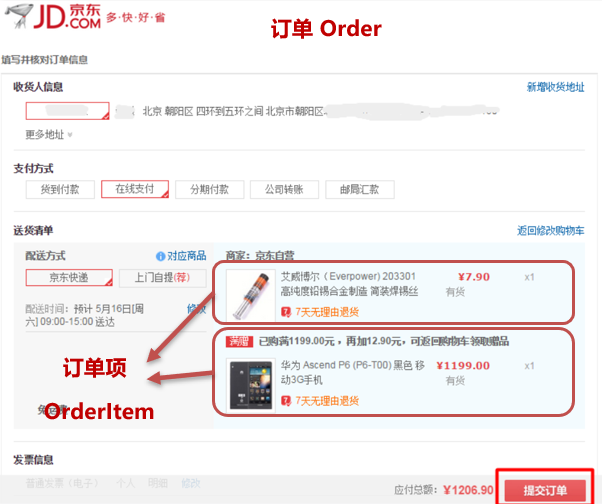
订单数据存储在订单表中,订单项存储在订单项表中。
添加订单数据:

添加订单项数据,订单项中需要设置所属订单的id:

明白了什么时候 主键返回 。接下来我们简单模拟一下,在添加完数据后打印id属性值,能打印出来说明已经获取到了。
我们将上面添加品牌数据的案例中映射配置文件里 statement 进行修改,如下:
useGeneratedKeys属性:是否获取自动增长的主键值,true表示获取keyProperty属性:指定将获取到的主键值封装到哪儿个属性里
<insert id="add" useGeneratedKeys="true" keyProperty="id">insert into tb_brand (brand_name, company_name, ordered, description, status)values (#{brandName}, #{companyName}, #{ordered}, #{description}, #{status});
</insert>
修改执行方法,打印返回的主键 id
// 执行方法
brandMapper.add(brand);
Integer id = brand.getId();
System.out.println(id);
5.4 修改数据
如下图所示是修改页面,用户在该页面书写需要修改的数据,点击 提交 按钮,就会将数据库中对应的数据进行修改。需要注意的是,如果哪儿个输入框没有输入内容,我们是将表中数据对应字段值替换为空白还是保留字段之前的值?答案肯定是保留之前的数据。
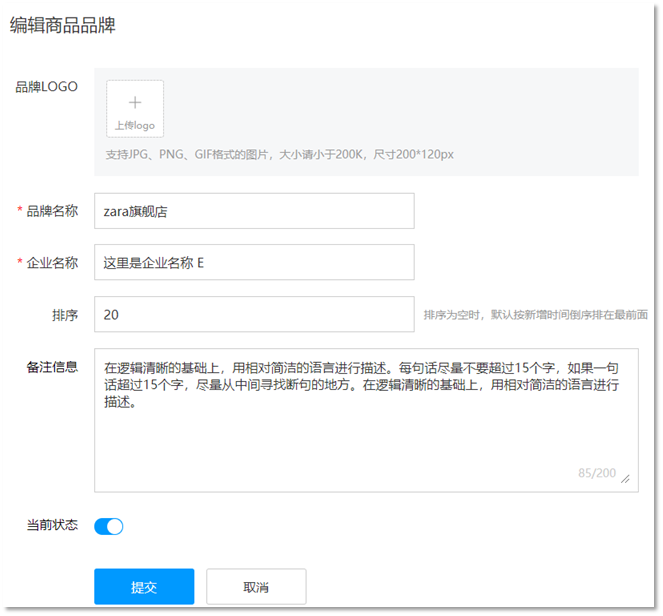
1.编写接口方法
package com.itheima.mapper;import com.itheima.pojo.Brand;public interface BrandMapper {/*** 修改*/int update(Brand brand);
}2.编写SQL语句
<?xml version="1.0" encoding="UTF-8" ?>
<!DOCTYPE mapperPUBLIC "-//mybatis.org//DTD Mapper 3.0//EN""http://mybatis.org/dtd/mybatis-3-mapper.dtd"><!--namespace: 名称空间-->
<mapper namespace="com.itheima.mapper.BrandMapper"><update id="update">update tb_brand<set><if test="brandName != null and brandName != ''">brand_name = #{brandName},</if><if test="companyName != null and companyName != ''">company_name = #{companyName},</if><if test="ordered != null">ordered = #{ordered},</if><if test="description != null and description != ''">description = #{description},</if><if test="status != null">status = #{status}</if></set>where id = #{id};</update>
</mapper>3.编写测试方法
package com.itheima.test;import com.itheima.mapper.BrandMapper;
import com.itheima.pojo.Brand;
import org.apache.ibatis.io.Resources;
import org.apache.ibatis.session.SqlSession;
import org.apache.ibatis.session.SqlSessionFactory;
import org.apache.ibatis.session.SqlSessionFactoryBuilder;
import org.junit.Test;import java.io.IOException;
import java.io.InputStream;
import java.util.List;public class MybatisTest {@Testpublic void testUpdate() throws IOException {// 1.获取SqlSessionFactoryString resource = "mybatis-config.xml";InputStream inputStream = Resources.getResourceAsStream(resource);SqlSessionFactory sqlSessionFactory = new SqlSessionFactoryBuilder().build(inputStream);// 2.获取SqlSession对象SqlSession sqlSession = sqlSessionFactory.openSession();// 3.获取Mapper接口的代理对象BrandMapper brandMapper = sqlSession.getMapper(BrandMapper.class);// 4.执行方法// 接收参数int id = 5;int status = 0;String companyName = "波导手机";String brandName = "波导";String description = "波导手机,手机中的战斗机";int ordered = 200;// 封装对象Brand brand = new Brand();brand.setId(id);brand.setStatus(status);brand.setOrdered(ordered);// 执行方法int count = brandMapper.update(brand);System.out.println(count);// 提交事务sqlSession.commit();// 5.释放资源sqlSession.close();}
}运行结果如下:
执行代码前:

执行代码后:

5.5 删除数据
5.5.1 删除单条数据
如下图所示,每行数据后面都有一个 删除 按钮,当用户点击了该按钮,就会将改行数据删除掉。那我们就需要思考,这种删除是根据什么进行删除呢?是通过主键id删除,因为id是表中数据的唯一标识。

1.编写接口方法
package com.itheima.mapper;import com.itheima.pojo.Brand;public interface BrandMapper {/*** 根据id删除*/void deleteById(int id);
}2.编写SQL语句
<?xml version="1.0" encoding="UTF-8" ?>
<!DOCTYPE mapperPUBLIC "-//mybatis.org//DTD Mapper 3.0//EN""http://mybatis.org/dtd/mybatis-3-mapper.dtd"><!--namespace: 名称空间-->
<mapper namespace="com.itheima.mapper.BrandMapper"><delete id="deleteById">delete from tb_brand where id = #{id};</delete>
</mapper>3.编写测试方法
package com.itheima.test;import com.itheima.mapper.BrandMapper;
import com.itheima.pojo.Brand;
import org.apache.ibatis.io.Resources;
import org.apache.ibatis.session.SqlSession;
import org.apache.ibatis.session.SqlSessionFactory;
import org.apache.ibatis.session.SqlSessionFactoryBuilder;
import org.junit.Test;import java.io.IOException;
import java.io.InputStream;
import java.util.List;public class MybatisTest {@Testpublic void testDeleteById() throws IOException {// 1.获取SqlSessionFactoryString resource = "mybatis-config.xml";InputStream inputStream = Resources.getResourceAsStream(resource);SqlSessionFactory sqlSessionFactory = new SqlSessionFactoryBuilder().build(inputStream);// 2.获取SqlSession对象SqlSession sqlSession = sqlSessionFactory.openSession();// 3.获取Mapper接口的代理对象BrandMapper brandMapper = sqlSession.getMapper(BrandMapper.class);// 4.执行方法// 接收参数int id = 5;// 执行方法brandMapper.deleteById(id);// 提交事务sqlSession.commit();// 5.释放资源sqlSession.close();}
}运行结果如下:
执行代码前:

执行代码后:

5.5.2 批量删除数据
如下图所示,用户可以选择多条数据,然后点击上面的 删除 按钮,就会删除数据库中对应的多行数据。
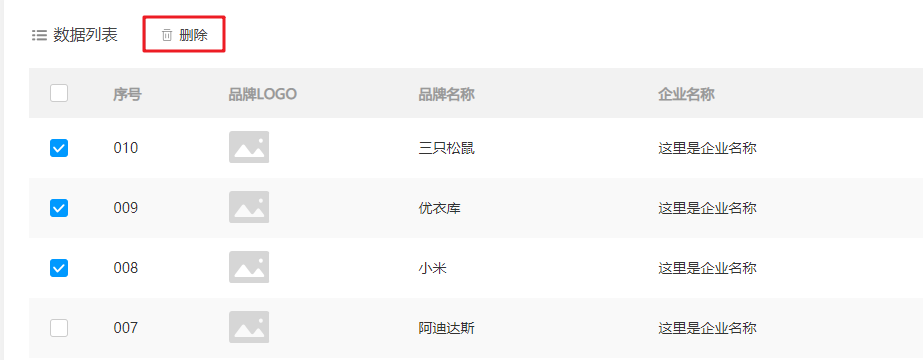
1.编写接口方法
package com.itheima.mapper;import com.itheima.pojo.Brand;public interface BrandMapper {/*** 批量删除*/void deleteByIds(int[] ids);
}参数是一个数组,数组中存储的是多条数据的
id
2.编写SQL语句:编写SQL时需要遍历数组来拼接SQL语句,Mybatis 提供了 foreach 标签供我们使用。
foreach 标签:用来迭代任何可迭代的对象(如数组、集合等)。
collection属性: mybatis会将数组参数,封装为一个Map集合。- 默认:array = 数组
- 可以使用@Param注解改变map集合的默认key的名称
item属性:本次迭代获取到的元素。separator属性:集合项迭代之间的分隔符。foreach标签不会错误地添加多余的分隔符,也就是最后一次迭代不会加分隔符。open属性:该属性值是在拼接SQL语句之前拼接的语句,只会拼接一次close属性:该属性值是在拼接SQL语句拼接后拼接的语句,只会拼接一次
<?xml version="1.0" encoding="UTF-8" ?>
<!DOCTYPE mapperPUBLIC "-//mybatis.org//DTD Mapper 3.0//EN""http://mybatis.org/dtd/mybatis-3-mapper.dtd"><!--namespace: 名称空间-->
<mapper namespace="com.itheima.mapper.BrandMapper"><delete id="deleteByIds">delete from tb_brand where idin<foreach collection="array" item="id" separator="," open="(" close=")">#{id}</foreach>;</delete>
</mapper>假如数组中的id数据是{1,2,3},那么拼接后的sql语句就是:
delete from tb_brand where id in (1,2,3);
可以使用@Param注解改变map集合的默认key的名称,例如修改默认key为 ids:
<foreach collection="ids" item="id" separator="," open="(" close=")">#{id}
</foreach>
void deleteByIds(@Param("ids") int[] ids);
3.编写测试方法
package com.itheima.test;import com.itheima.mapper.BrandMapper;
import com.itheima.pojo.Brand;
import org.apache.ibatis.io.Resources;
import org.apache.ibatis.session.SqlSession;
import org.apache.ibatis.session.SqlSessionFactory;
import org.apache.ibatis.session.SqlSessionFactoryBuilder;
import org.junit.Test;import java.io.IOException;
import java.io.InputStream;
import java.util.List;public class MybatisTest {@Testpublic void testDeleteByIds() throws IOException {// 1.获取SqlSessionFactoryString resource = "mybatis-config.xml";InputStream inputStream = Resources.getResourceAsStream(resource);SqlSessionFactory sqlSessionFactory = new SqlSessionFactoryBuilder().build(inputStream);// 2.获取SqlSession对象SqlSession sqlSession = sqlSessionFactory.openSession();// 3.获取Mapper接口的代理对象BrandMapper brandMapper = sqlSession.getMapper(BrandMapper.class);// 4.执行方法// 接收参数int[] ids = {1, 2, 3};// 执行方法brandMapper.deleteByIds(ids);// 提交事务sqlSession.commit();// 5.释放资源sqlSession.close();}
}运行结果如下:
执行代码前:

执行代码后:

6. Mybatis参数传递
Mybatis 接口方法中可以接收各种各样的参数,如下:
- 多个参数
- 单个参数:单个参数又可以是如下类型
POJO类型Map集合类型Collection集合类型List集合类型Array类型- 其他类型
6.1 多个参数
如下面的代码,就是接收两个参数,而接收多个参数需要使用 @Param 注解,那么为什么要加该注解呢?这个问题要弄明白就必须来研究Mybatis 底层对于这些参数是如何处理的。
User select(@Param("username") String username,@Param("password") String password);
<select id="select" resultType="user">select * from tb_userwhere username=#{username}and password=#{password}
</select>
我们在接口方法中定义多个参数,Mybatis 会将这些参数封装成 Map 集合对象,值就是参数值,而键在没有使用 @Param 注解时有以下命名规则:
-
以 arg 开头 :第一个参数就叫 arg0,第二个参数就叫 arg1,以此类推。如:
map.put("arg0",参数值1);map.put("arg1",参数值2);
-
以 param 开头 : 第一个参数就叫 param1,第二个参数就叫 param2,依次类推。如:
map.put("param1",参数值1);map.put("param2",参数值2);
代码验证:
1.编写接口方法:在 UserMapper 接口中定义如下方法
package com.itheima.mapper;import com.itheima.pojo.User;import java.util.List;public interface UserMapper {User select(String username,String password);
}2.编写SQL语句:在 UserMapper.xml 映射配置文件中定义SQL,可以使用 arg 或者 param
使用 arg 开头:
<?xml version="1.0" encoding="UTF-8" ?>
<!DOCTYPE mapperPUBLIC "-//mybatis.org//DTD Mapper 3.0//EN""http://mybatis.org/dtd/mybatis-3-mapper.dtd"><!--namespace: 名称空间-->
<mapper namespace="com.itheima.mapper.UserMapper"><select id="select" resultType="user">select * from tb_userwhere username=#{arg0}and password=#{arg1}</select>
</mapper>使用 param 开头:
<?xml version="1.0" encoding="UTF-8" ?>
<!DOCTYPE mapperPUBLIC "-//mybatis.org//DTD Mapper 3.0//EN""http://mybatis.org/dtd/mybatis-3-mapper.dtd"><!--namespace: 名称空间-->
<mapper namespace="com.itheima.mapper.UserMapper"><select id="select" resultType="user">select * from tb_userwhere username=#{param1}and password=#{param2}</select>
</mapper>3.编写测试方法:在MybatisTest类中,编写如下代码
package com.itheima.test;import com.itheima.mapper.UserMapper;
import com.itheima.pojo.User;
import org.apache.ibatis.io.Resources;
import org.apache.ibatis.session.SqlSession;
import org.apache.ibatis.session.SqlSessionFactory;
import org.apache.ibatis.session.SqlSessionFactoryBuilder;
import org.junit.Test;import java.io.IOException;
import java.io.InputStream;
import java.util.List;public class MybatisTest {@Testpublic void test() throws IOException {// 1.获取SqlSessionFactoryString resource = "mybatis-config.xml";InputStream inputStream = Resources.getResourceAsStream(resource);SqlSessionFactory sqlSessionFactory = new SqlSessionFactoryBuilder().build(inputStream);// 2.获取SqlSession对象SqlSession sqlSession = sqlSessionFactory.openSession();// 3.获取Mapper接口的代理对象UserMapper userMapper = sqlSession.getMapper(UserMapper.class);// 4.执行方法// 接收参数String username = "张三";String password = "123";User user = userMapper.select(username, password);System.out.println(user);// 5.释放资源sqlSession.close();}
}运行结果如下:

在映射配合文件的SQL语句中使用用 arg 开头的和 param 书写,代码的可读性会变的特别差,此时可以使用 @Param 注解。在接口方法参数上使用 @Param 注解,Mybatis 会将 arg 开头的键名替换为对应注解的属性值。
代码验证:
1.在 UserMapper 接口中定义如下方法,在 username 参数前加上 @Param 注解
Mybatis 在封装 Map 集合时,键名就会变成如下:
map.put("username",参数值1);map.put("arg1",参数值2);map.put("param1",参数值1);map.put("param2",参数值2);
User select(@Param("username") String username, String password);
2.在 UserMapper.xml 映射配置文件中定义SQL
正确的SQL语句:
<select id="select" resultType="user">select * from tb_userwhere username=#{username}and password=#{arg1}
</select>
错误的SQL语句:
<select id="select" resultType="user">select * from tb_userwhere username=#{arg0}and password=#{arg1}
</select>
运行报错如下:显示没找到arg0参数,有效的参数为 [arg1, param1, username, param2]

结论:以后接口参数是多个时,在每个参数上都使用
@Param注解。这样代码的可读性更高
6.2 单个参数
单个参数的类型:
-
POJO 类型:直接使用,要求
属性名和参数占位符名称一致 -
Map 集合类型:直接使用,要求
map集合的键名和参数占位符名称一致 -
Collection 集合类型:Mybatis 会将集合封装到 map 集合中,如下:
map.put("arg0",collection集合);map.put("collection",collection集合);
-
List 集合类型:Mybatis 会将集合封装到 map 集合中,如下:
map.put("arg0",list集合);map.put("collection",list集合);map.put("list",list集合);
-
Array 类型:Mybatis 会将集合封装到 map 集合中,如下:
map.put("arg0",数组);map.put("array",数组);
-
其他类型: 比如int类型,
参数占位符名称叫什么都可以,尽量做到见名知意。
注:以上都可以使用
@Param注解替换map集合中默认的 arg 键名
7. 注解实现CRUD
使用注解开发会比配置文件开发更加方便,但是注解只能完成简单功能,而配置文件可以完成复杂功能
Mybatis 针对 CURD 操作都提供了对应的注解,已经做到见名知意。如下:
- 查询 :
@Select - 添加 :
@Insert - 修改 :
@Update - 删除 :
@Delete
注解是用来替换映射配置文件方式配置的,所以使用了注解,就不需要再映射配置文件中书写对应的
statement
1.查询数据
编写接口方法:
package com.itheima.mapper;import com.itheima.pojo.User;
import org.apache.ibatis.annotations.Select;import java.util.List;public interface UserMapper {@Select("select * from tb_user where id = #{id}")User selectById(int id);
}编写测试方法:
package com.itheima.test;import com.itheima.mapper.UserMapper;
import com.itheima.pojo.User;
import org.apache.ibatis.io.Resources;
import org.apache.ibatis.session.SqlSession;
import org.apache.ibatis.session.SqlSessionFactory;
import org.apache.ibatis.session.SqlSessionFactoryBuilder;
import org.junit.Test;import java.io.IOException;
import java.io.InputStream;
import java.util.List;public class MybatisTest {@Testpublic void test() throws IOException {// 1.获取SqlSessionFactoryString resource = "mybatis-config.xml";InputStream inputStream = Resources.getResourceAsStream(resource);SqlSessionFactory sqlSessionFactory = new SqlSessionFactoryBuilder().build(inputStream);// 2.获取SqlSession对象SqlSession sqlSession = sqlSessionFactory.openSession();// 3.获取Mapper接口的代理对象UserMapper userMapper = sqlSession.getMapper(UserMapper.class);// 4.执行方法// 接收参数int id = 1;User user = userMapper.selectById(id);System.out.println(user);// 5.释放资源sqlSession.close();}
}2.添加数据
编写接口方法:
package com.itheima.mapper;import com.itheima.pojo.User;
import org.apache.ibatis.annotations.Insert;
import org.apache.ibatis.annotations.Select;import java.util.List;public interface UserMapper {@Insert("insert into tb_user (username, password, gender, addr) " +"values (#{username}, #{password}, #{gender}, #{addr})")int add(User user);
}编写测试方法:
package com.itheima.test;import com.itheima.mapper.UserMapper;
import com.itheima.pojo.User;
import org.apache.ibatis.io.Resources;
import org.apache.ibatis.session.SqlSession;
import org.apache.ibatis.session.SqlSessionFactory;
import org.apache.ibatis.session.SqlSessionFactoryBuilder;
import org.junit.Test;import java.io.IOException;
import java.io.InputStream;
import java.util.List;public class MybatisTest {@Testpublic void test() throws IOException {// 1.获取SqlSessionFactoryString resource = "mybatis-config.xml";InputStream inputStream = Resources.getResourceAsStream(resource);SqlSessionFactory sqlSessionFactory = new SqlSessionFactoryBuilder().build(inputStream);// 2.获取SqlSession对象SqlSession sqlSession = sqlSessionFactory.openSession();// 3.获取Mapper接口的代理对象UserMapper userMapper = sqlSession.getMapper(UserMapper.class);// 4.执行方法// 接收参数String username = "诸葛亮";String password = "234";String gender = "男";String addr = "成都";// 封装对象User user = new User();user.setUsername(username);user.setPassword(password);user.setGender(gender);user.setAddr(addr);// 执行方法int count = userMapper.add(user);System.out.println(count);// 提交事务sqlSession.commit();// 5.释放资源sqlSession.close();}
}3.修改数据
编写接口方法:
package com.itheima.mapper;import com.itheima.pojo.User;
import org.apache.ibatis.annotations.Insert;
import org.apache.ibatis.annotations.Select;
import org.apache.ibatis.annotations.Update;import java.util.List;public interface UserMapper {@Update("update tb_user " +"set username = #{username}, password = #{password}, gender = #{gender}, addr = #{addr}" +"where id = #{id};")int update(User user);
}编写测试方法:
package com.itheima.test;import com.itheima.mapper.UserMapper;
import com.itheima.pojo.User;
import org.apache.ibatis.io.Resources;
import org.apache.ibatis.session.SqlSession;
import org.apache.ibatis.session.SqlSessionFactory;
import org.apache.ibatis.session.SqlSessionFactoryBuilder;
import org.junit.Test;import java.io.IOException;
import java.io.InputStream;
import java.util.List;public class MybatisTest {@Testpublic void test() throws IOException {// 1.获取SqlSessionFactoryString resource = "mybatis-config.xml";InputStream inputStream = Resources.getResourceAsStream(resource);SqlSessionFactory sqlSessionFactory = new SqlSessionFactoryBuilder().build(inputStream);// 2.获取SqlSession对象SqlSession sqlSession = sqlSessionFactory.openSession();// 3.获取Mapper接口的代理对象UserMapper userMapper = sqlSession.getMapper(UserMapper.class);// 4.执行方法// 接收参数int id = 1;String username = "诸葛亮";String password = "234";String gender = "男";String addr = "成都";// 封装对象User user = new User();user.setId(id);user.setUsername(username);user.setPassword(password);user.setGender(gender);user.setAddr(addr);// 执行方法int count = userMapper.update(user);System.out.println(count);// 提交事务sqlSession.commit();// 5.释放资源sqlSession.close();}
}4.删除数据
编写接口方法:
package com.itheima.mapper;import com.itheima.pojo.User;
import org.apache.ibatis.annotations.Delete;
import org.apache.ibatis.annotations.Insert;
import org.apache.ibatis.annotations.Select;
import org.apache.ibatis.annotations.Update;import java.util.List;public interface UserMapper {@Delete("delete from tb_user where id = #{id};")void deleteById(int id);
}编写测试方法:
package com.itheima.test;import com.itheima.mapper.UserMapper;
import com.itheima.pojo.User;
import org.apache.ibatis.io.Resources;
import org.apache.ibatis.session.SqlSession;
import org.apache.ibatis.session.SqlSessionFactory;
import org.apache.ibatis.session.SqlSessionFactoryBuilder;
import org.junit.Test;import java.io.IOException;
import java.io.InputStream;
import java.util.List;public class MybatisTest {@Testpublic void test() throws IOException {// 1.获取SqlSessionFactoryString resource = "mybatis-config.xml";InputStream inputStream = Resources.getResourceAsStream(resource);SqlSessionFactory sqlSessionFactory = new SqlSessionFactoryBuilder().build(inputStream);// 2.获取SqlSession对象SqlSession sqlSession = sqlSessionFactory.openSession();// 3.获取Mapper接口的代理对象UserMapper userMapper = sqlSession.getMapper(UserMapper.class);// 4.执行方法// 接收参数int id = 1;// 执行方法userMapper.deleteById(id);// 提交事务sqlSession.commit();// 5.释放资源sqlSession.close();}
}相关文章:

【Java】MyBatis快速入门及详解
文章目录 1. MyBatis概述2. MyBatis快速入门2.1 创建项目2.2 添加依赖2.3 数据准备2.4 编写代码2.4.1 编写核心配置文件2.4.2 编写SQL映射文件2.4.3 编写Java代码 3. Mapper代理开发4. MyBatis核心配置文件5. 案例练习5.1 数据准备5.2 查询数据5.2.1 查询所有数据5.2.2 查询单条…...
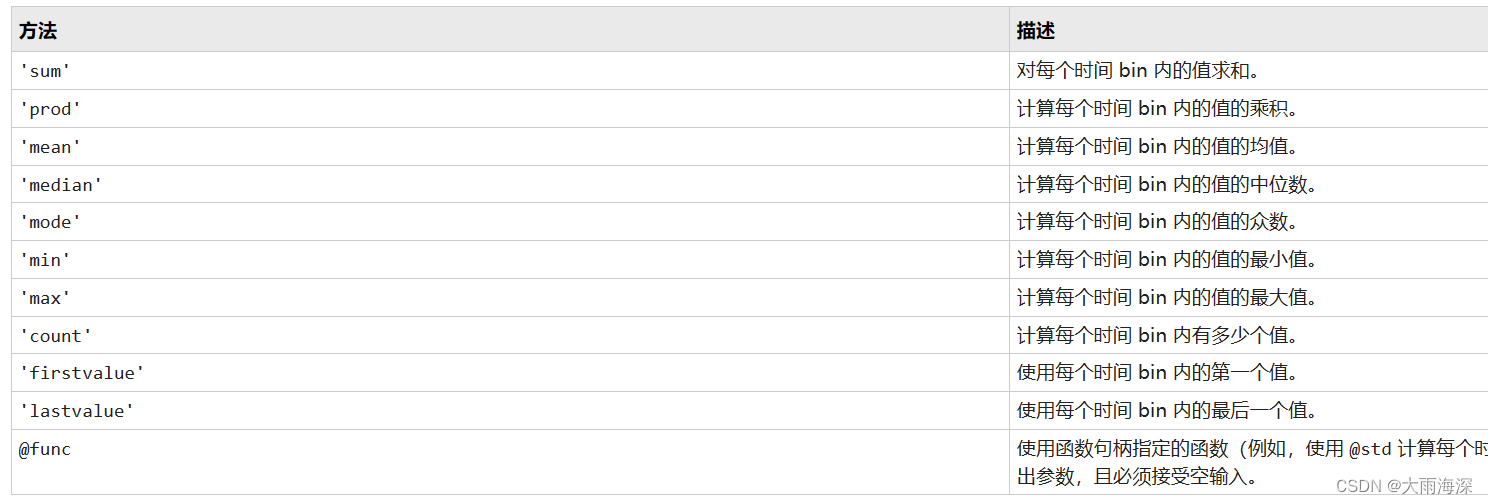
Matlab将日尺度数据转化为月尺度数据
日尺度转化为月尺度 clcclear all% load datadata xlread(data.xlsx) % 例如该数据为1961-01-01至2022-12-31,共计22645天data data(:,1:3) % 该数据有22645行,数据分别为降水,气温,湿度等三列dt datetime(1961-01-01):datatim…...
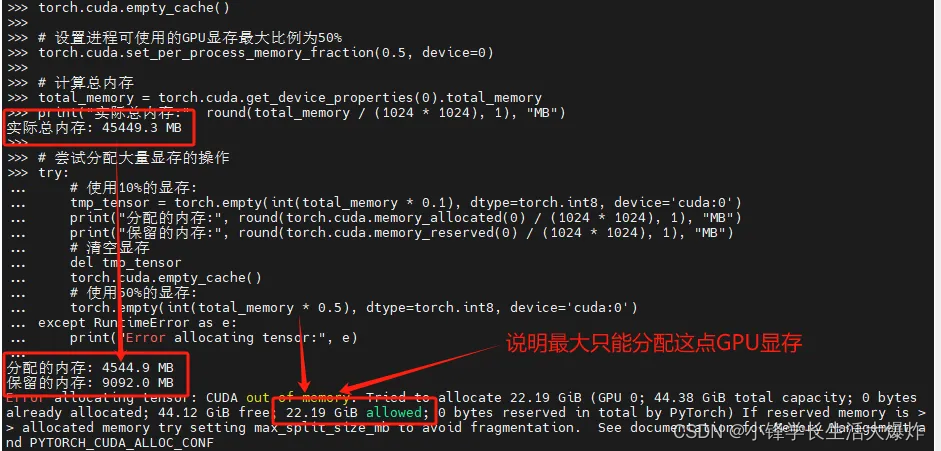
【技巧】PyTorch限制GPU显存的可使用上限
转载请注明出处:小锋学长生活大爆炸[xfxuezhang.cn] 从 PyTorch 1.4 版本开始,引入了一个新的功能 torch.cuda.set_per_process_memory_fraction(fraction, device),这个功能允许用户为特定的 GPU 设备设置进程可使用的显存上限比例。 测试代…...
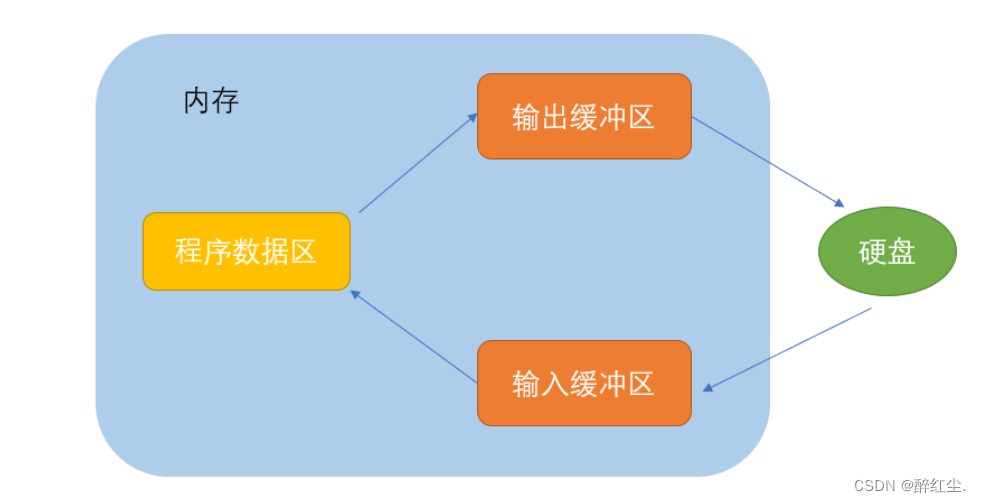
深度理解文件操作
目录 文件 文件名: 标准流 文件指针 文件的打开和关闭 文件的顺序读写: 使用部分 文件的打开和关闭 文件 文件分两种,第一种是程序文件,后一种是数据文件。 程序文件:包括源程序文件(后缀为.c&…...
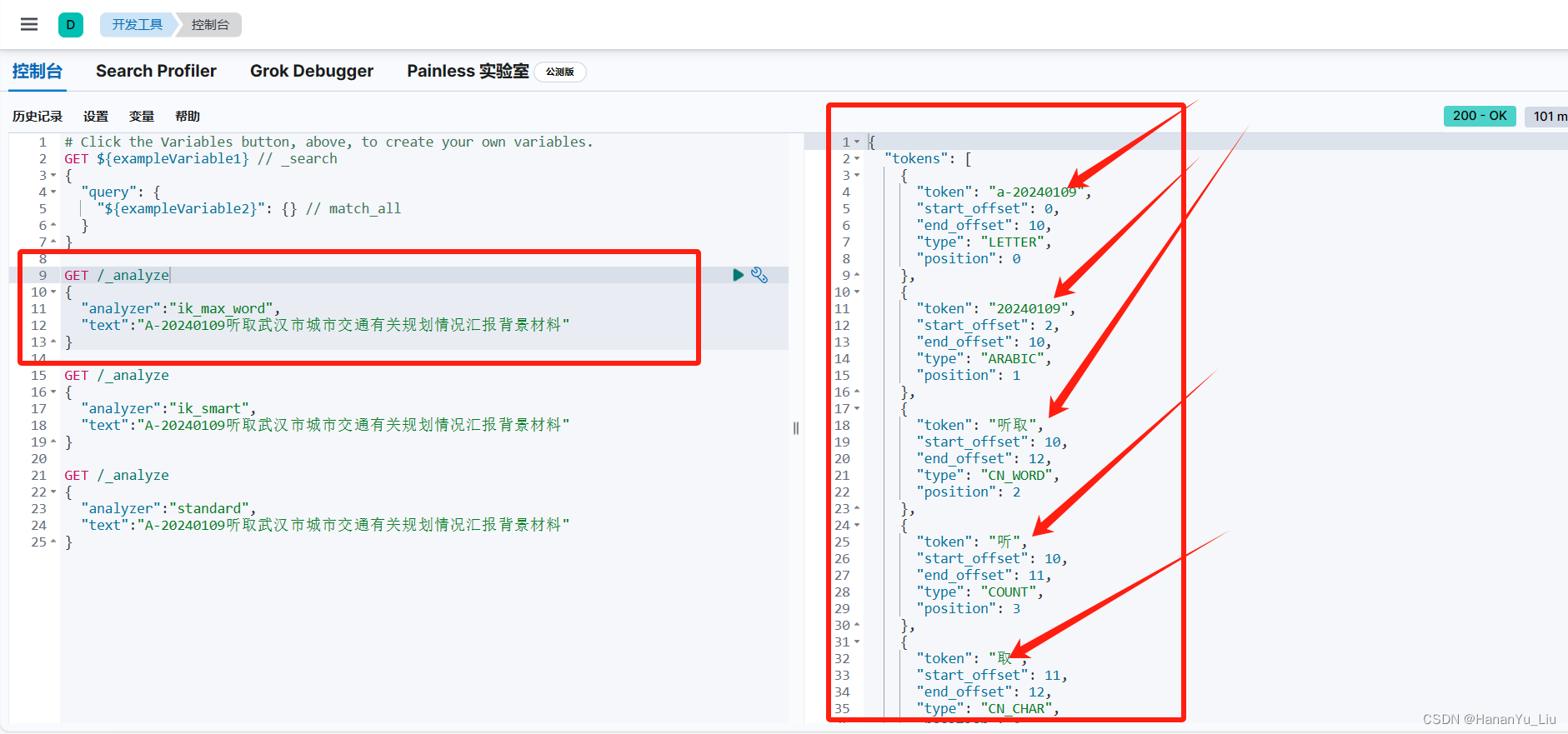
【搜索引擎2】实现API方式调用ElasticSearch8接口
1、理解ElasticSearch各名词含义 ElasticSearch对比Mysql Mysql数据库Elastic SearchDatabase7.X版本前有Type,对比数据库中的表,新版取消了TableIndexRowDocumentColumnmapping Elasticsearch是使用Java开发的,8.1版本的ES需要JDK17及以上…...

配置小程序的服务器域名
准备工作 拥有一个已注册的域名:确保您已经注册了一个符合国家和地区相关法律法规要求的域名。 完成域名备案(如有必要):根据国家和地区的法律法规,某些情况下可能需要对域名进行备案才能用于互联网服务。 配置 DNS&…...
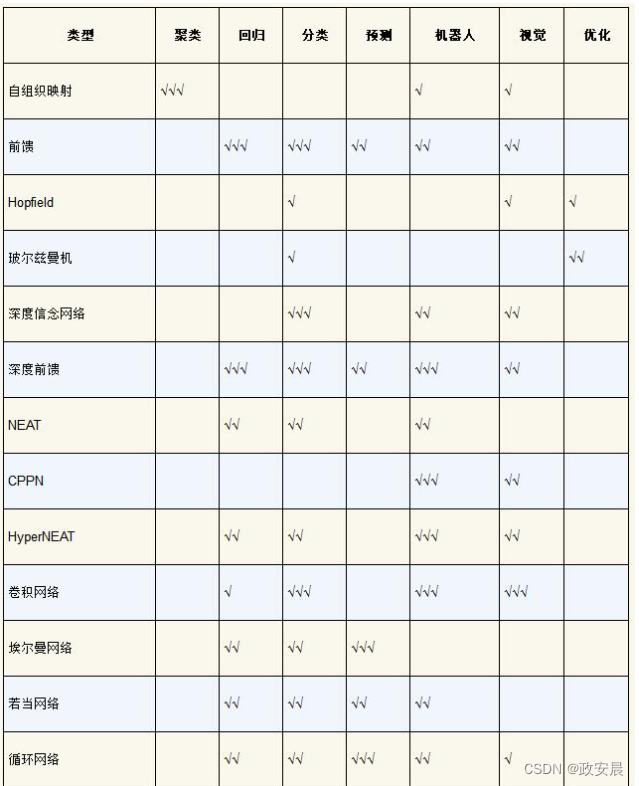
政安晨:【深度学习神经网络基础】(一)—— 逐本溯源
政安晨的个人主页:政安晨 欢迎 👍点赞✍评论⭐收藏 收录专栏: 政安晨的机器学习笔记 希望政安晨的博客能够对您有所裨益,如有不足之处,欢迎在评论区提出指正! 与计算机一样的古老历史 神经网络的出现可追溯到20世纪40年…...
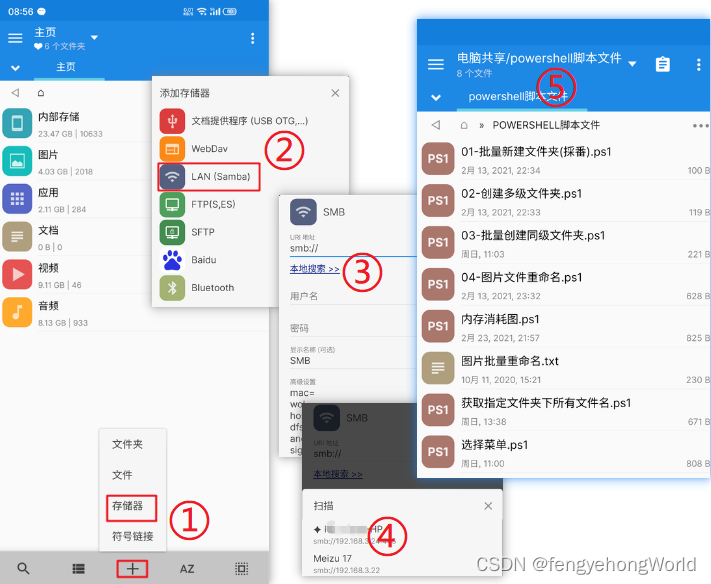
技巧 Win10电脑打开SMB协议共享文件,手机端查看
一. 打开 SMB1.0/CIFS文件共享支持 ⏹如下图所示,打开SMB1.0/CIFS文件共享支持 二. 开启网络发现 ⏹开启网络发现,确保共享的文件能在局域网内被发现 三. 共享文件夹到局域网 ⏹根据需要勾选需要共享的文件夹,共享到局域网 四. 共享文件查…...

java实现MP4视频压缩
要在Java中实现MP4视频压缩,您可以使用一些第三方库,比如ffmpeg或Xuggler等。下面是使用ffmpeg库进行MP4视频压缩的示例代码: java import java.io.BufferedReader; import java.io.InputStreamReader; public class MP4Compressor { public static void main(String[] args)…...

云电脑安全性怎么样?企业如何选择安全的云电脑
云电脑在保障企业数字资产安全方面,采取了一系列严谨而全面的措施。随着企业对于数字化转型的深入推进,数字资产的安全问题日益凸显,而云电脑作为一种新兴的办公模式,正是为解决这一问题而生。云电脑安全吗?可以放心使…...

【python】pygame游戏框架
文章目录 pygame常用模块pygame:主模块,包含初始化、退出、时间、事件等函数。pygame.cdrom 访问光驱pygame.cursors 加载光驱pygame.joystick 操作游戏手柄或者类似的东西pygame.mouse:鼠标模块,包含获取、设置、控制等函数。pygame.key 键盘模块pygame.display:显示模块…...

计算机OSI7层协议模型
OSI模型是由国际标准化组织(ISO)制定的一种网络通信的标准体系,旨在确保不同厂商的网络设备能够互联互通。该模型将网络通信划分为七个独立的层次,每一层负责特定的功能。这种分层设计使得网络协议的开发、维护和升级更加容易。 …...
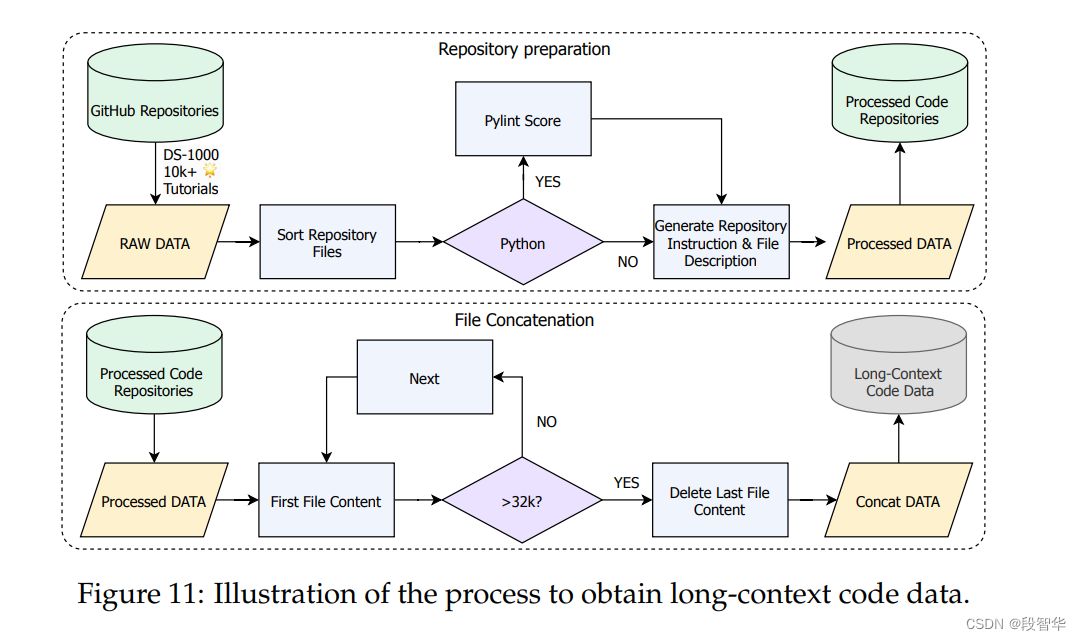
书生·浦语大模型实战营之全链路开源体系
书生浦语大模型实战营之全链路开源体系 为了推动大模型在更多行业落地开花,让开发者们更高效的学习大模型的开发与应用,上海人工智能实验室重磅推出书生浦语大模型实战营,为广大开发者搭建大模型学习和实践开发的平台,两周时间带…...

/.git/config文件目录
git config可以看做是一个配置工具,它允许用户获得和设置与git相关的配置选项,是我们灵活使用git软件的第一步...

MySQL 8.0 新特性之不可见主键
数据库设计通常需要满足一定的范式要求,其中主键更是最基本的要求。不过,数据库管理系统却允许我们创建没有主键的表。这样的表在 MySQL 中会带来查询性能低下、复制延迟甚至无法实现高可用配置等问题。 为此,MySQL 8.0.30 版本引入了一个新…...

kubernetes-networkpolicies网络策略问题
kubernetes-networkpolicies网络策略问题 问题描述 重点重点重点,查看我的博客CKA考题,里面能找到解决方法 1.部署prometheus监控的时候,都部署成功,但是web访问503-504超时 2.添加ingress的时候也是访问不到,其他命…...
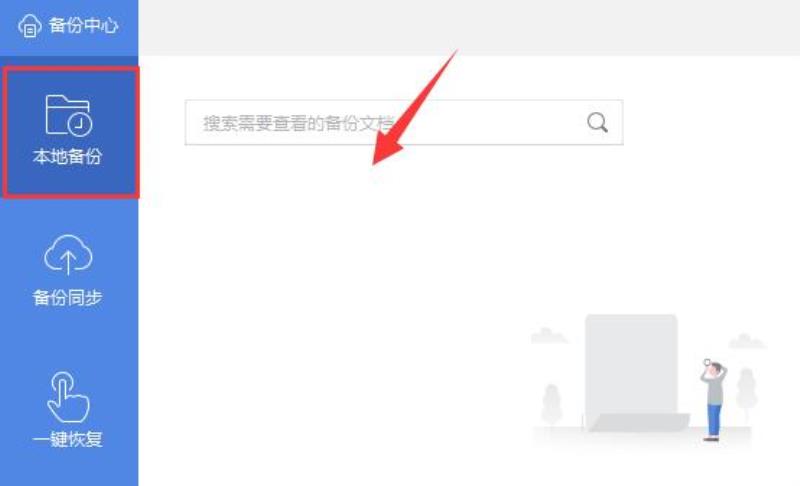
wps没保存关闭了恢复数据教程
有时候我们因为电脑问题会忘记保存就关闭wps导致数据丢失,不知道wps没保存关闭了怎么恢复数据,其实数据是无法恢复的。 wps没保存关闭了怎么恢复数据 1、wps没有数据恢复功能,不过可以开启自动备份。 2、我们可以先点击wps左上角的“文件”…...

Android9.0以后不允许HTTP访问的解决方案
背景 自 Android 9.0 起,默认禁止使用 HTTP 进行访问。当尝试使用 HTTP 链接时,将会收到以下错误信息: "Cleartext HTTP traffic to " host " not permitted"为了解决这一问题,下面介绍两种破解方法&…...
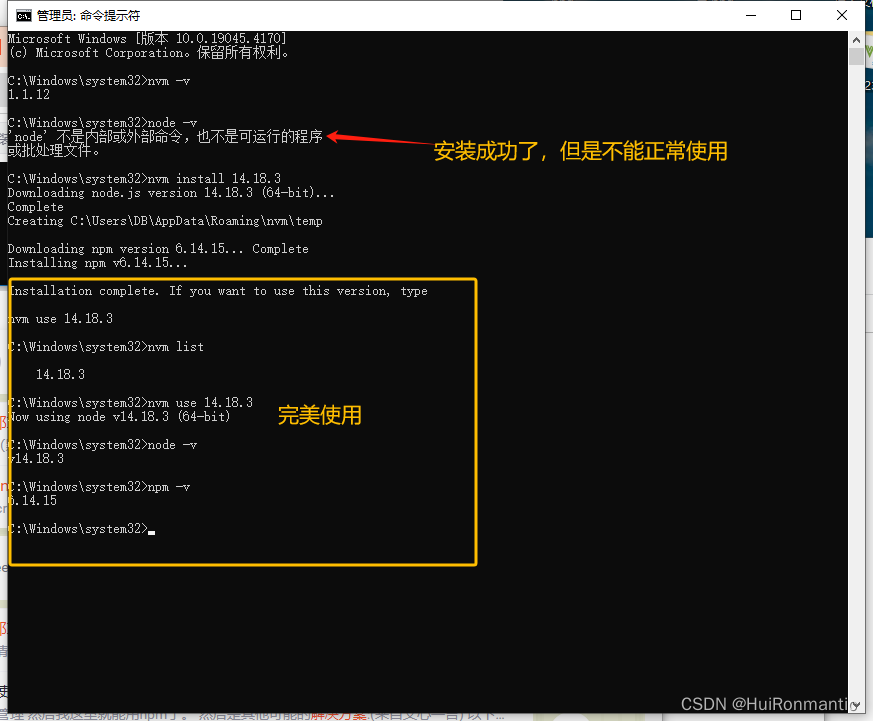
nvm安装以后,node -v npm 等命令提示不是内部或外部命令
因为有vue2和vue3项目多种,所以为了适应各类版本node,使用nvm管理多种node版本,但是当我按教程安装nvm以后,nvm安装以后,node -v npm 等命令提示不是内部或外部命令 首先nvm官网网址:https://github.com/coreybutler/…...

SBA架构5G核心网
SBA(Service Based Architecture)架构是一种面向服务的架构,旨在提供更灵活、更可扩展、更容易部署和管理的解决方案。在电信领域,SBA架构被广泛应用于5G核心网和下一代网络的设计中。 在卫星互联网核心网的总体技术要求中&#…...

【Axure高保真原型】引导弹窗
今天和大家中分享引导弹窗的原型模板,载入页面后,会显示引导弹窗,适用于引导用户使用页面,点击完成后,会显示下一个引导弹窗,直至最后一个引导弹窗完成后进入首页。具体效果可以点击下方视频观看或打开下方…...

Docker 离线安装指南
参考文章 1、确认操作系统类型及内核版本 Docker依赖于Linux内核的一些特性,不同版本的Docker对内核版本有不同要求。例如,Docker 17.06及之后的版本通常需要Linux内核3.10及以上版本,Docker17.09及更高版本对应Linux内核4.9.x及更高版本。…...

K8S认证|CKS题库+答案| 11. AppArmor
目录 11. AppArmor 免费获取并激活 CKA_v1.31_模拟系统 题目 开始操作: 1)、切换集群 2)、切换节点 3)、切换到 apparmor 的目录 4)、执行 apparmor 策略模块 5)、修改 pod 文件 6)、…...

Go 语言接口详解
Go 语言接口详解 核心概念 接口定义 在 Go 语言中,接口是一种抽象类型,它定义了一组方法的集合: // 定义接口 type Shape interface {Area() float64Perimeter() float64 } 接口实现 Go 接口的实现是隐式的: // 矩形结构体…...
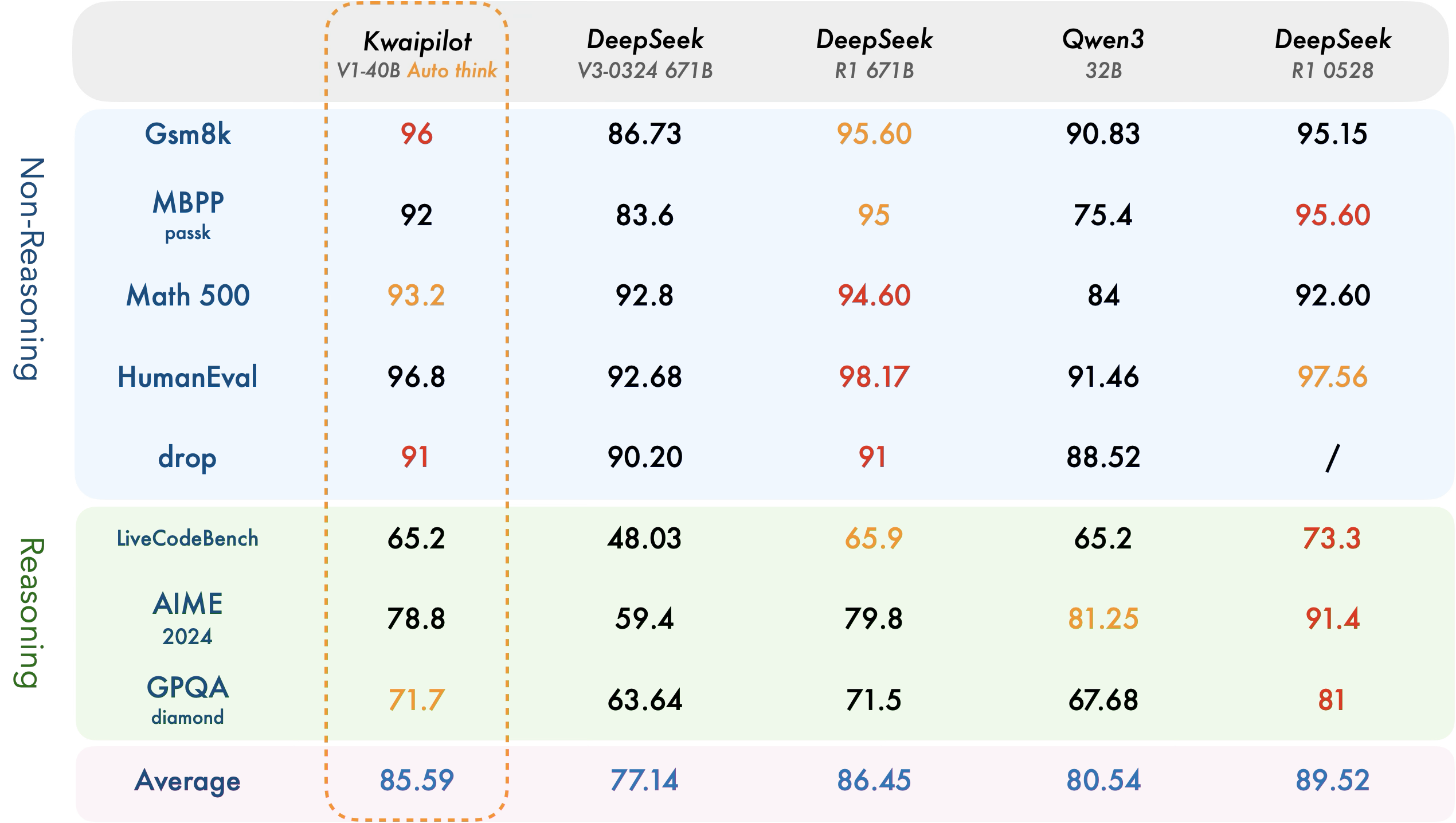
【快手拥抱开源】通过快手团队开源的 KwaiCoder-AutoThink-preview 解锁大语言模型的潜力
引言: 在人工智能快速发展的浪潮中,快手Kwaipilot团队推出的 KwaiCoder-AutoThink-preview 具有里程碑意义——这是首个公开的AutoThink大语言模型(LLM)。该模型代表着该领域的重大突破,通过独特方式融合思考与非思考…...
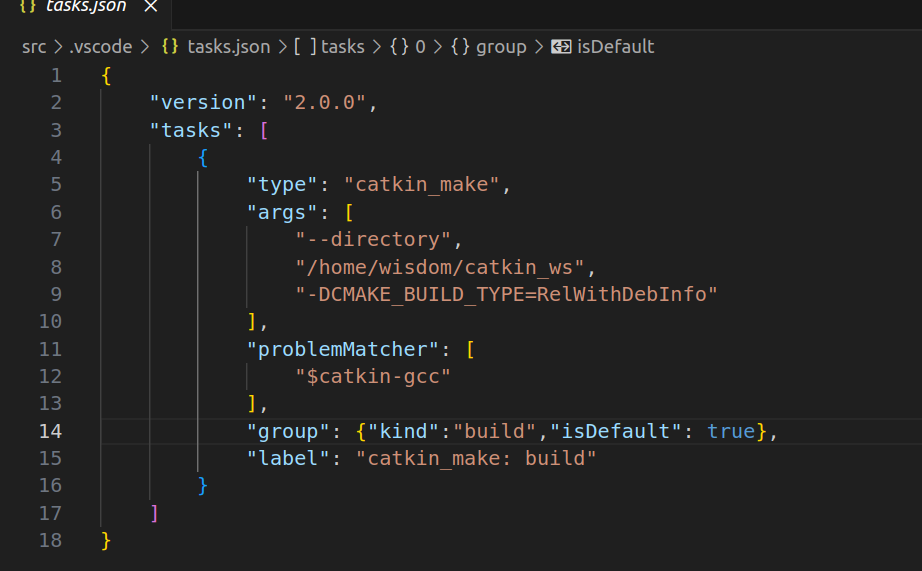
1.3 VSCode安装与环境配置
进入网址Visual Studio Code - Code Editing. Redefined下载.deb文件,然后打开终端,进入下载文件夹,键入命令 sudo dpkg -i code_1.100.3-1748872405_amd64.deb 在终端键入命令code即启动vscode 需要安装插件列表 1.Chinese简化 2.ros …...

Java-41 深入浅出 Spring - 声明式事务的支持 事务配置 XML模式 XML+注解模式
点一下关注吧!!!非常感谢!!持续更新!!! 🚀 AI篇持续更新中!(长期更新) 目前2025年06月05日更新到: AI炼丹日志-28 - Aud…...
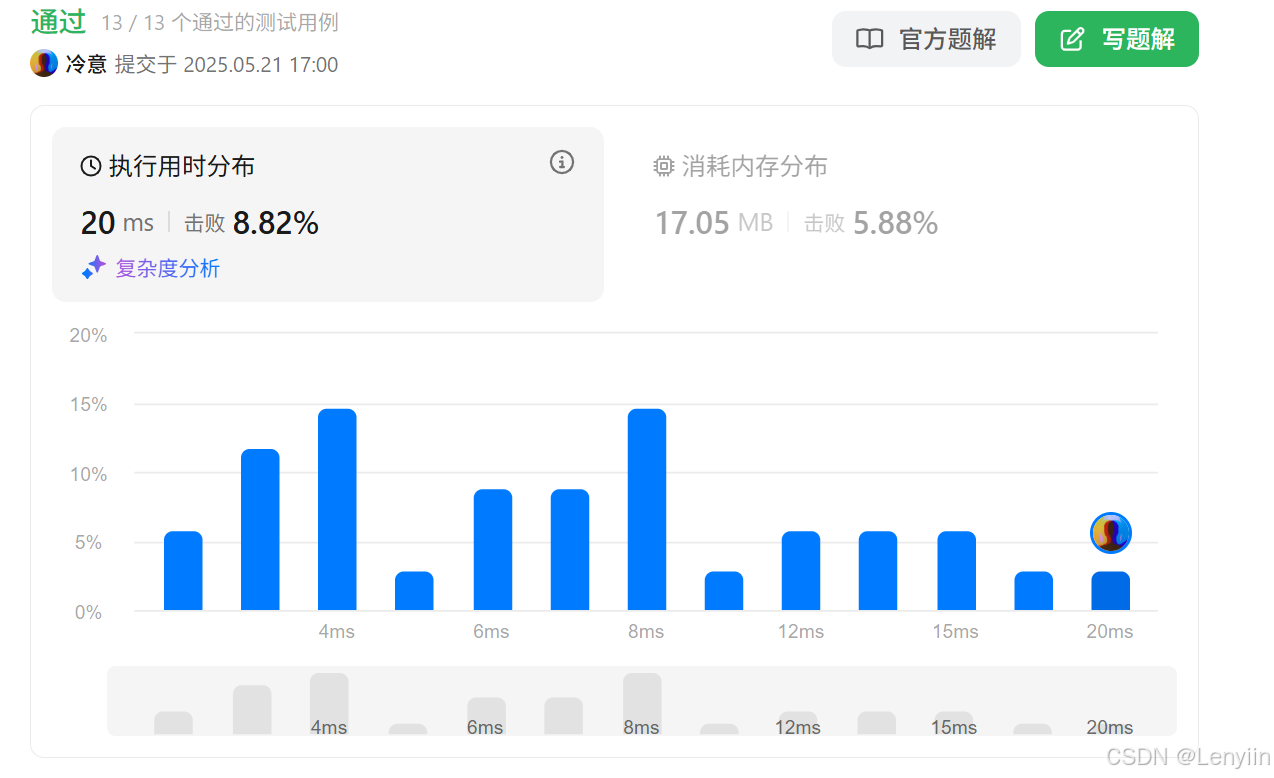
第 86 场周赛:矩阵中的幻方、钥匙和房间、将数组拆分成斐波那契序列、猜猜这个单词
Q1、[中等] 矩阵中的幻方 1、题目描述 3 x 3 的幻方是一个填充有 从 1 到 9 的不同数字的 3 x 3 矩阵,其中每行,每列以及两条对角线上的各数之和都相等。 给定一个由整数组成的row x col 的 grid,其中有多少个 3 3 的 “幻方” 子矩阵&am…...
混合(Blending))
C++.OpenGL (20/64)混合(Blending)
混合(Blending) 透明效果核心原理 #mermaid-svg-SWG0UzVfJms7Sm3e {font-family:"trebuchet ms",verdana,arial,sans-serif;font-size:16px;fill:#333;}#mermaid-svg-SWG0UzVfJms7Sm3e .error-icon{fill:#552222;}#mermaid-svg-SWG0UzVfJms7Sm3e .error-text{fill…...

AI+无人机如何守护濒危物种?YOLOv8实现95%精准识别
【导读】 野生动物监测在理解和保护生态系统中发挥着至关重要的作用。然而,传统的野生动物观察方法往往耗时耗力、成本高昂且范围有限。无人机的出现为野生动物监测提供了有前景的替代方案,能够实现大范围覆盖并远程采集数据。尽管具备这些优势…...
